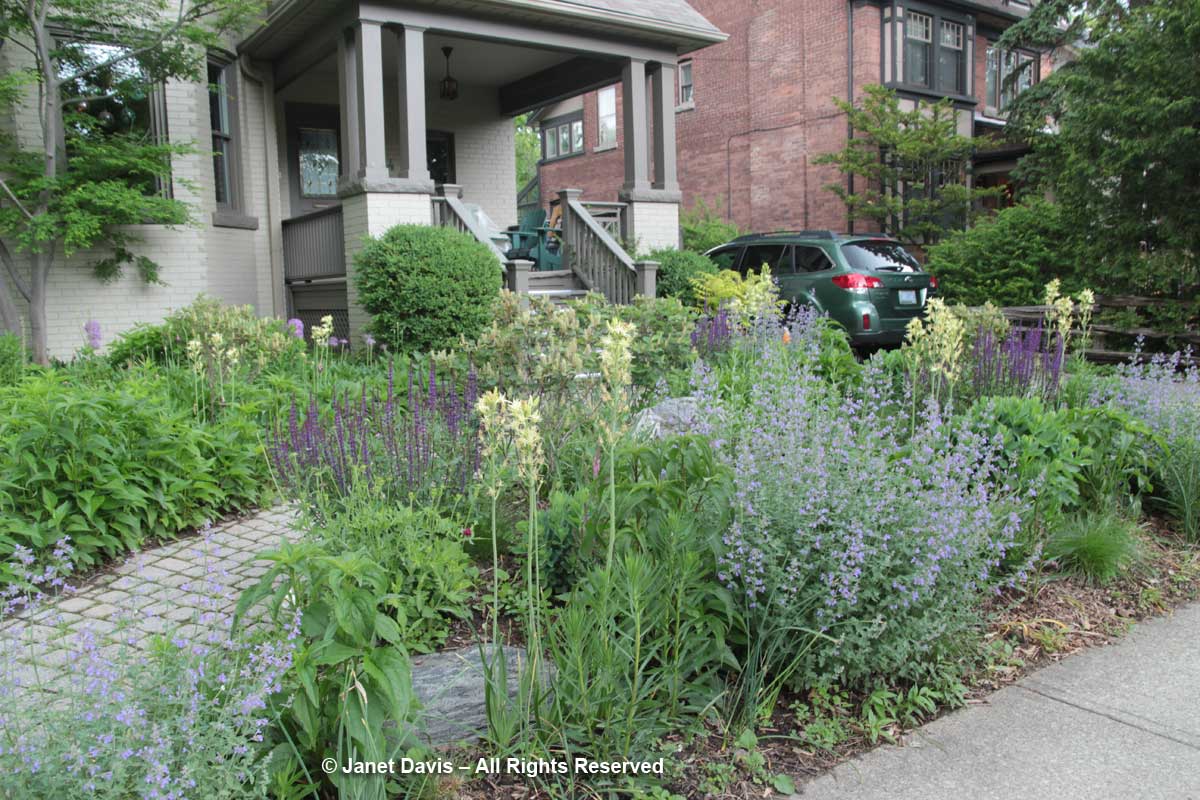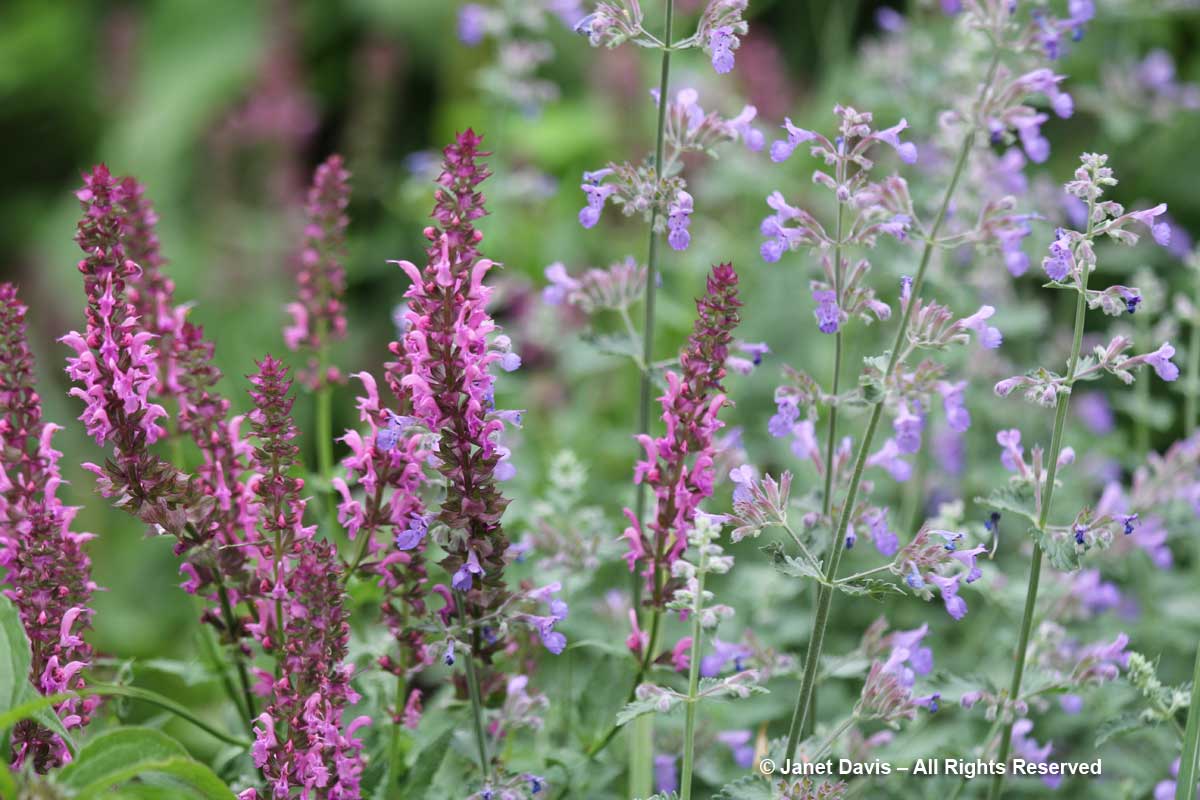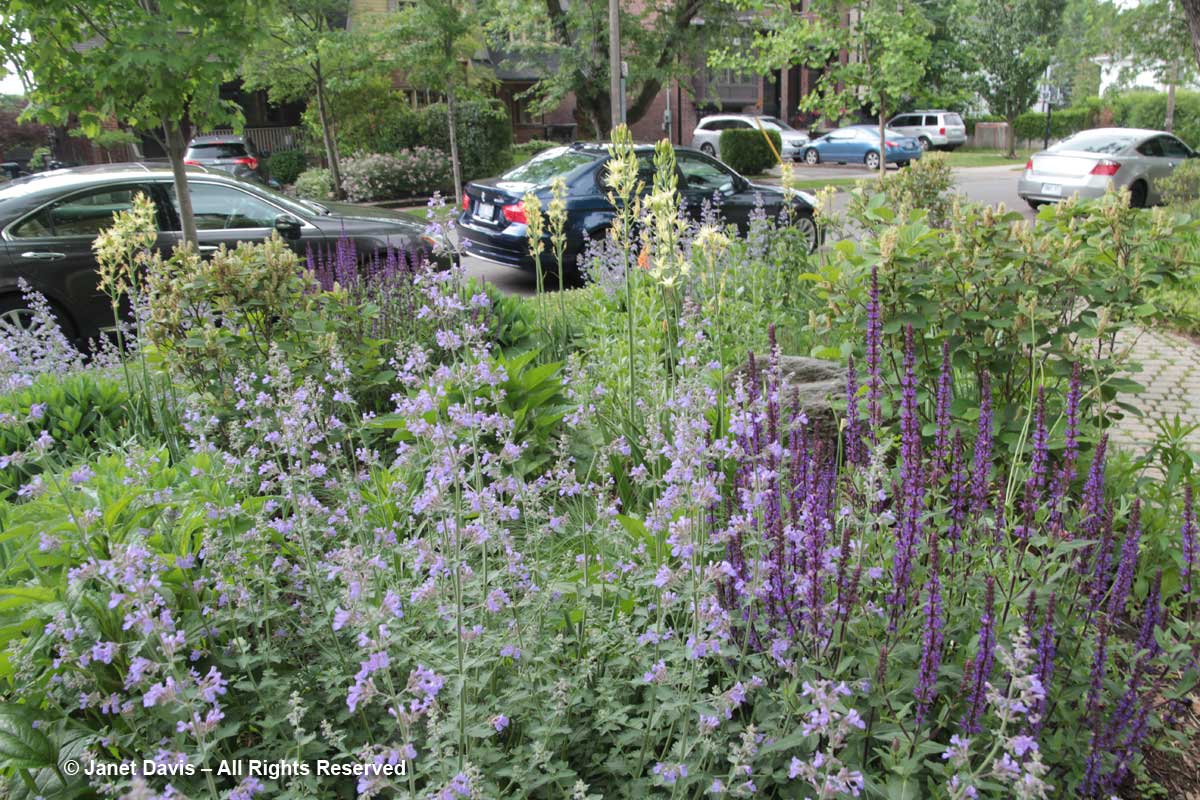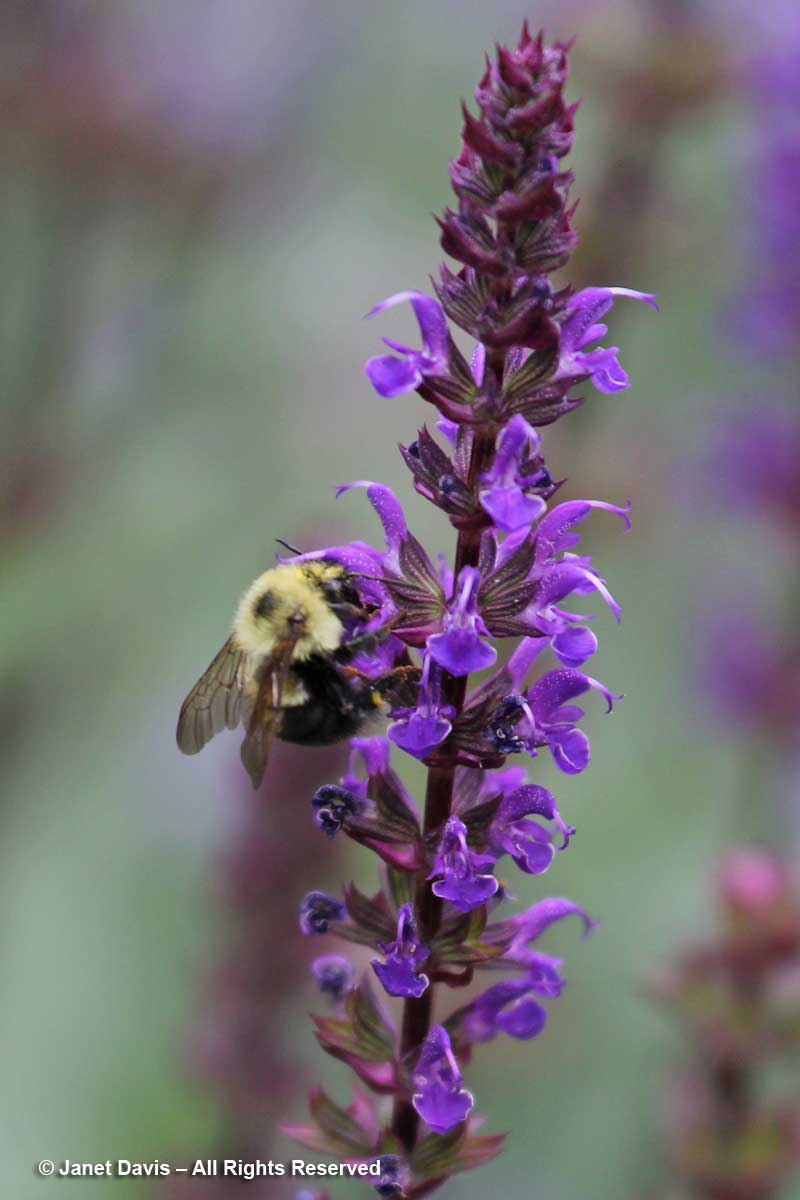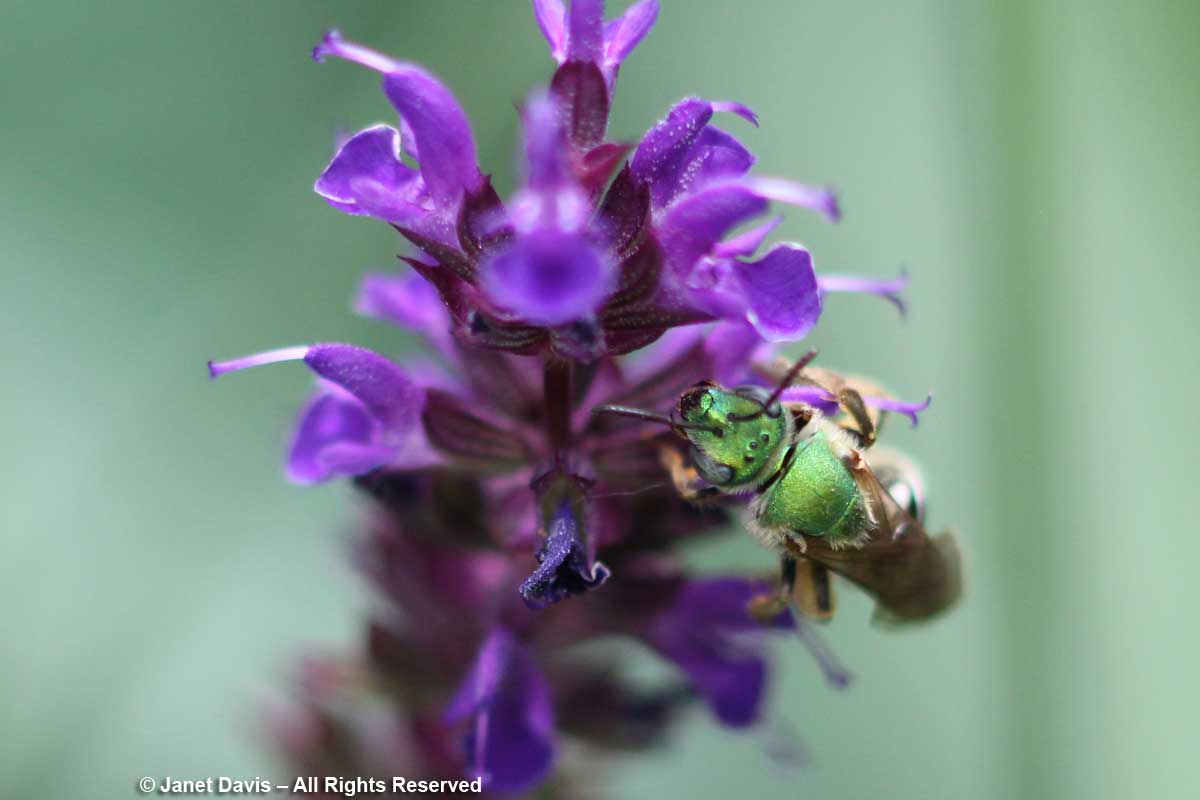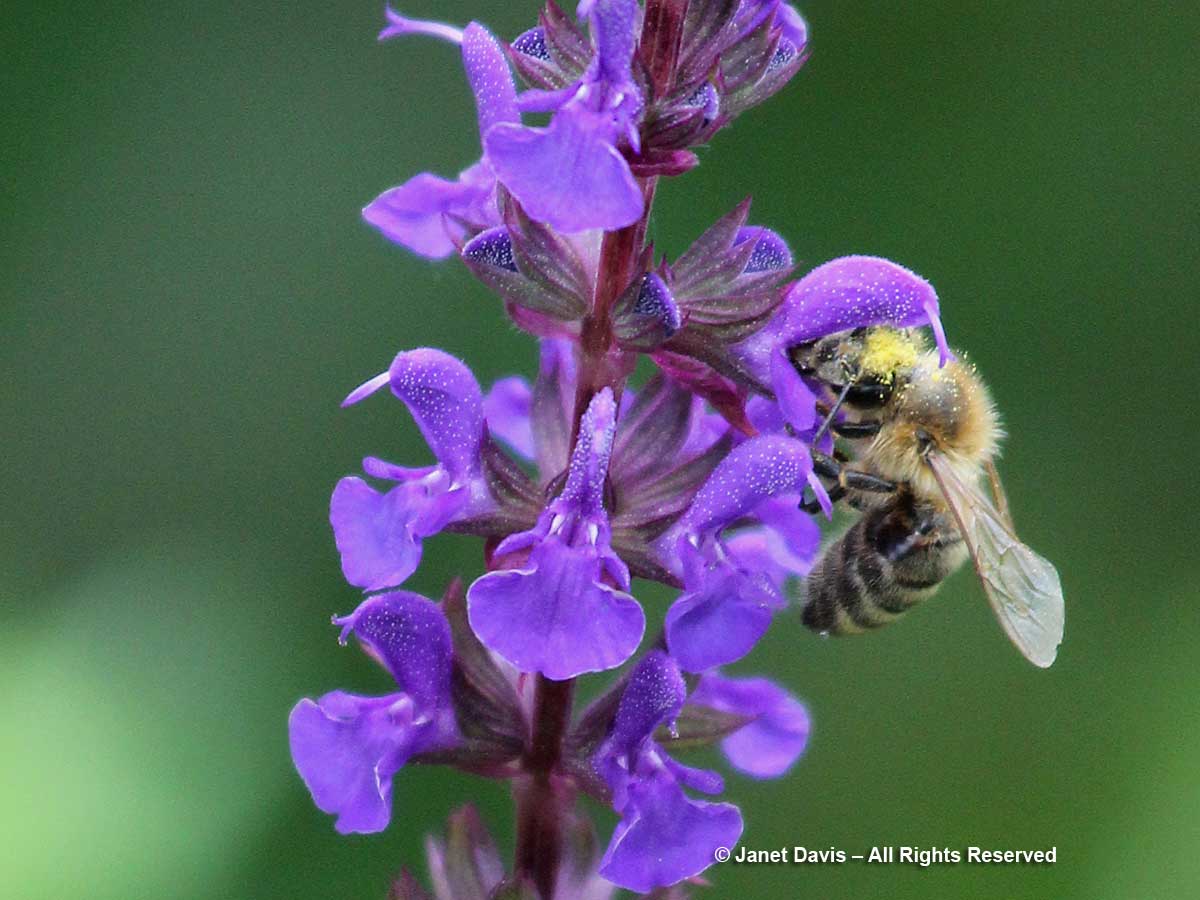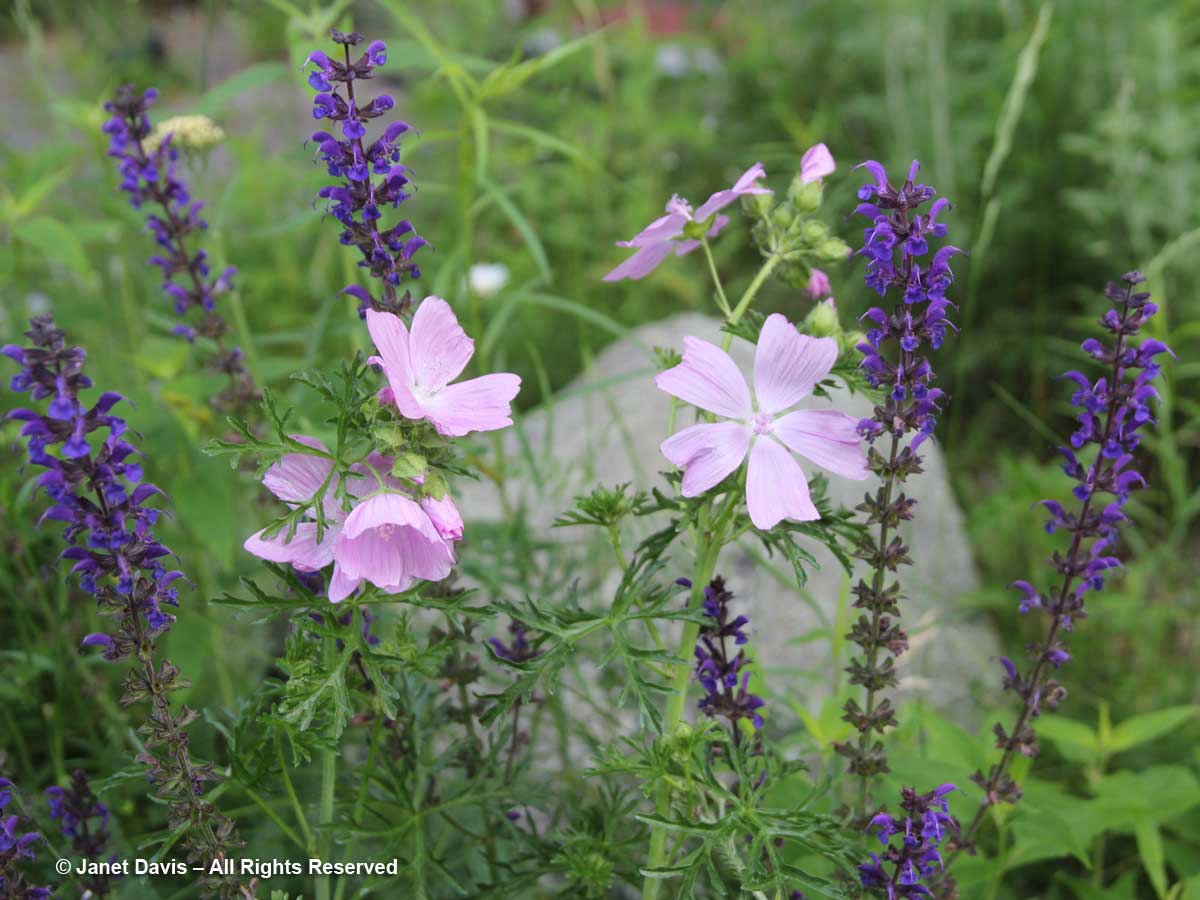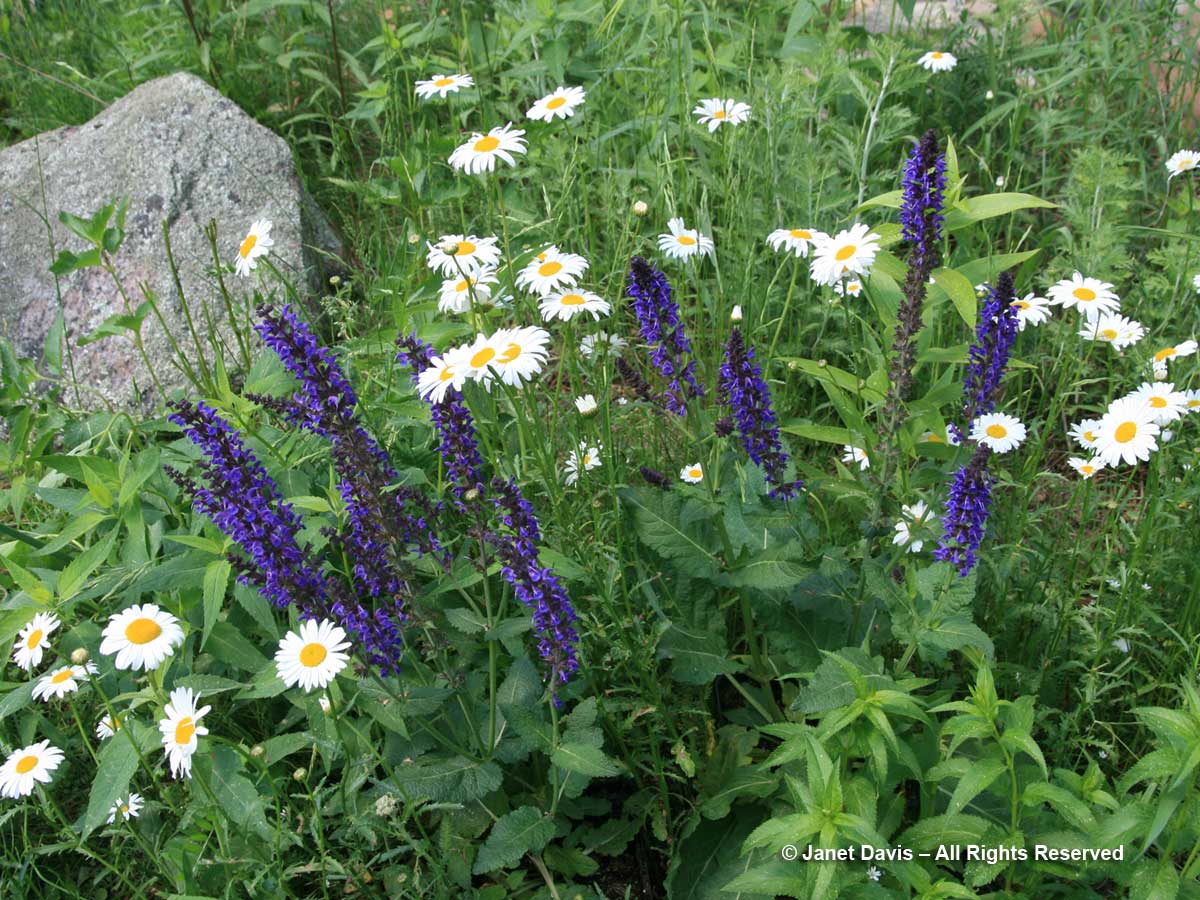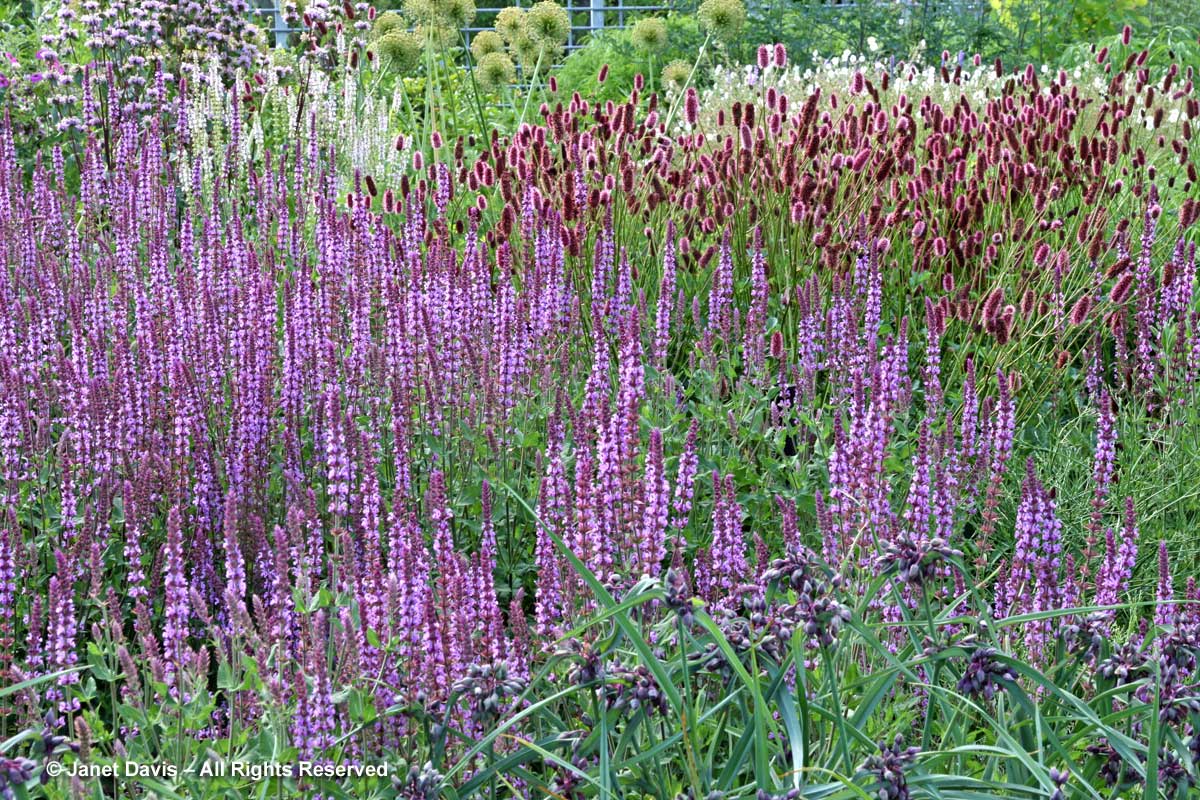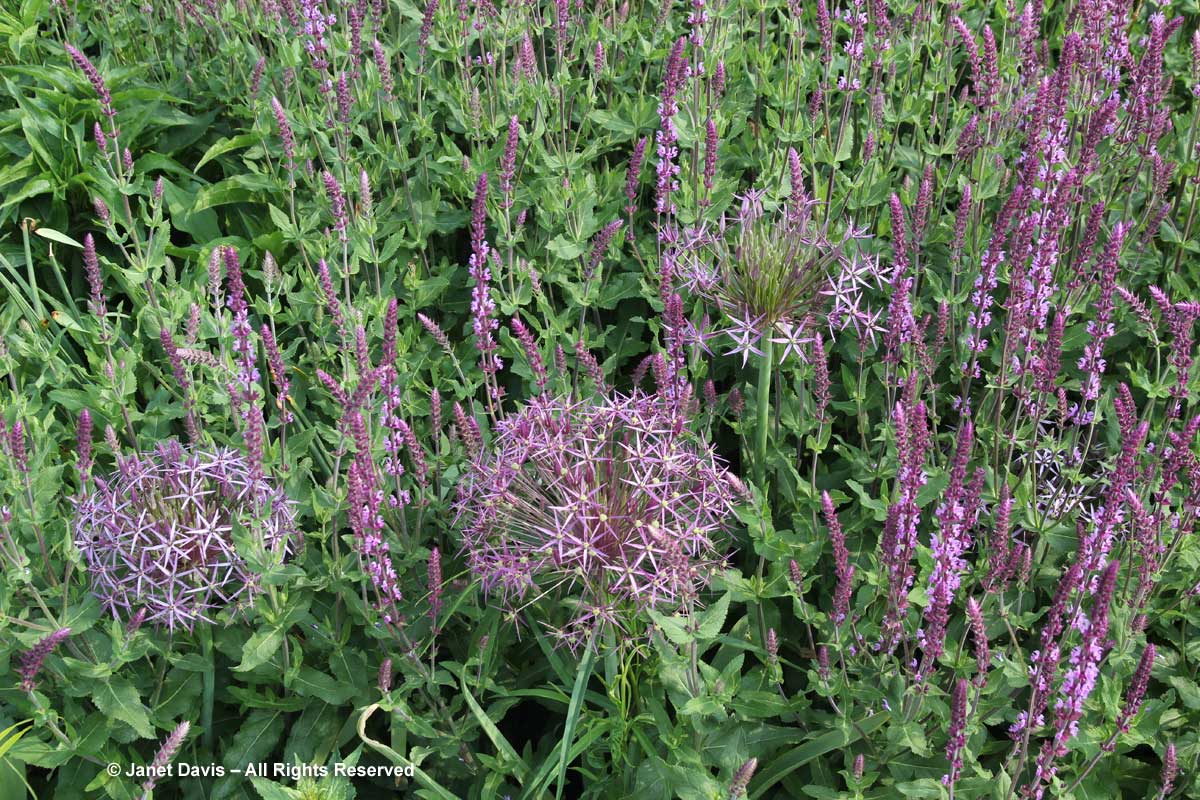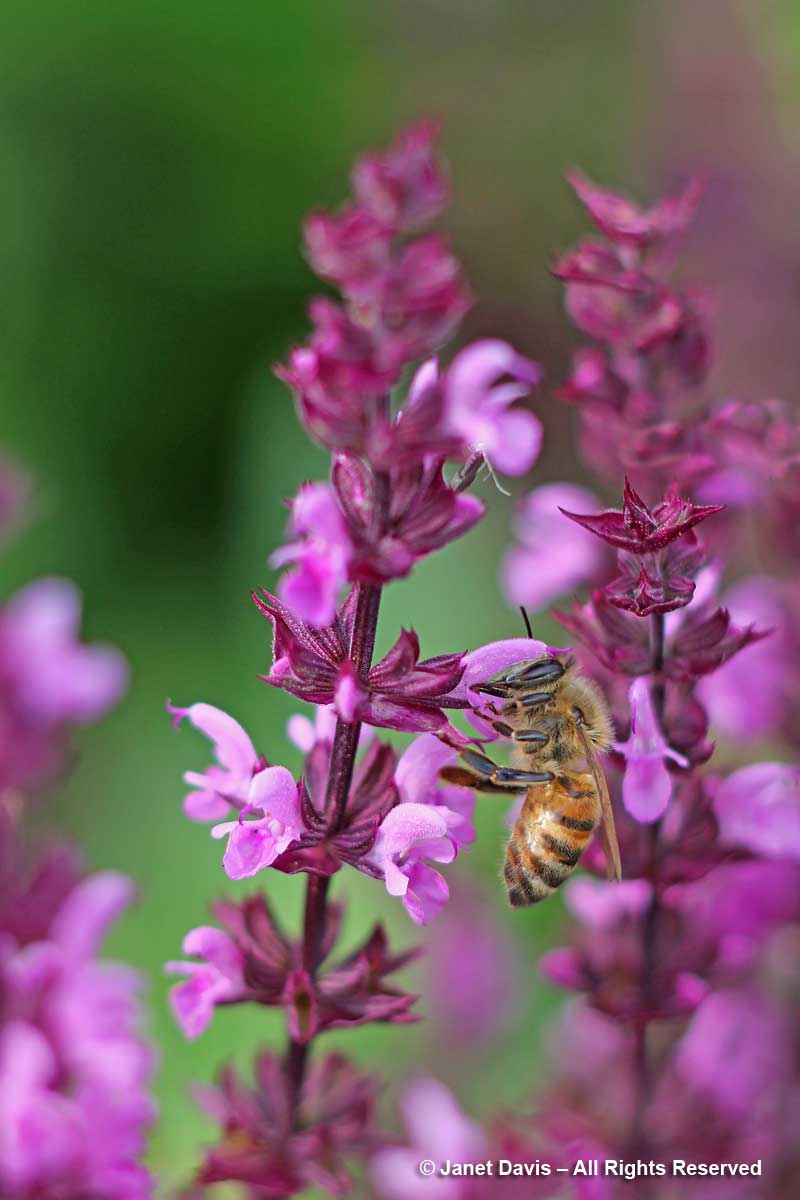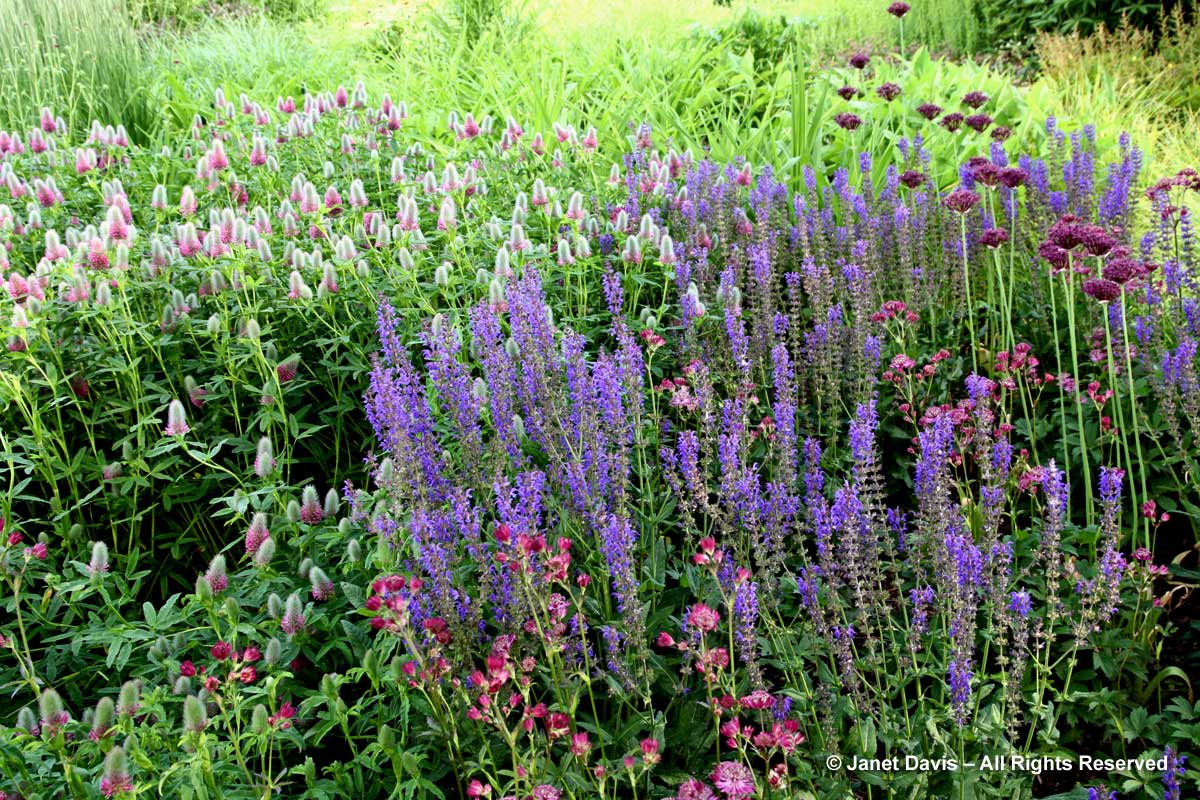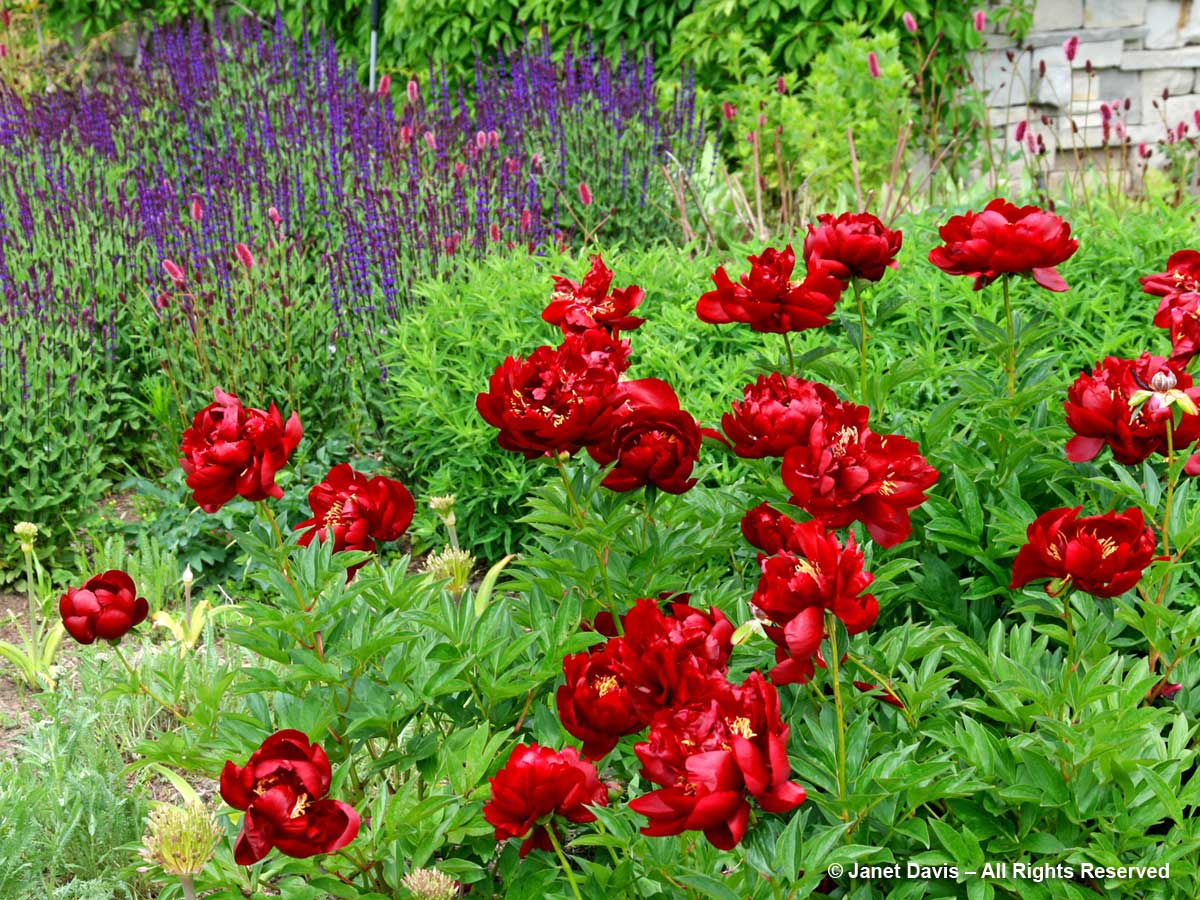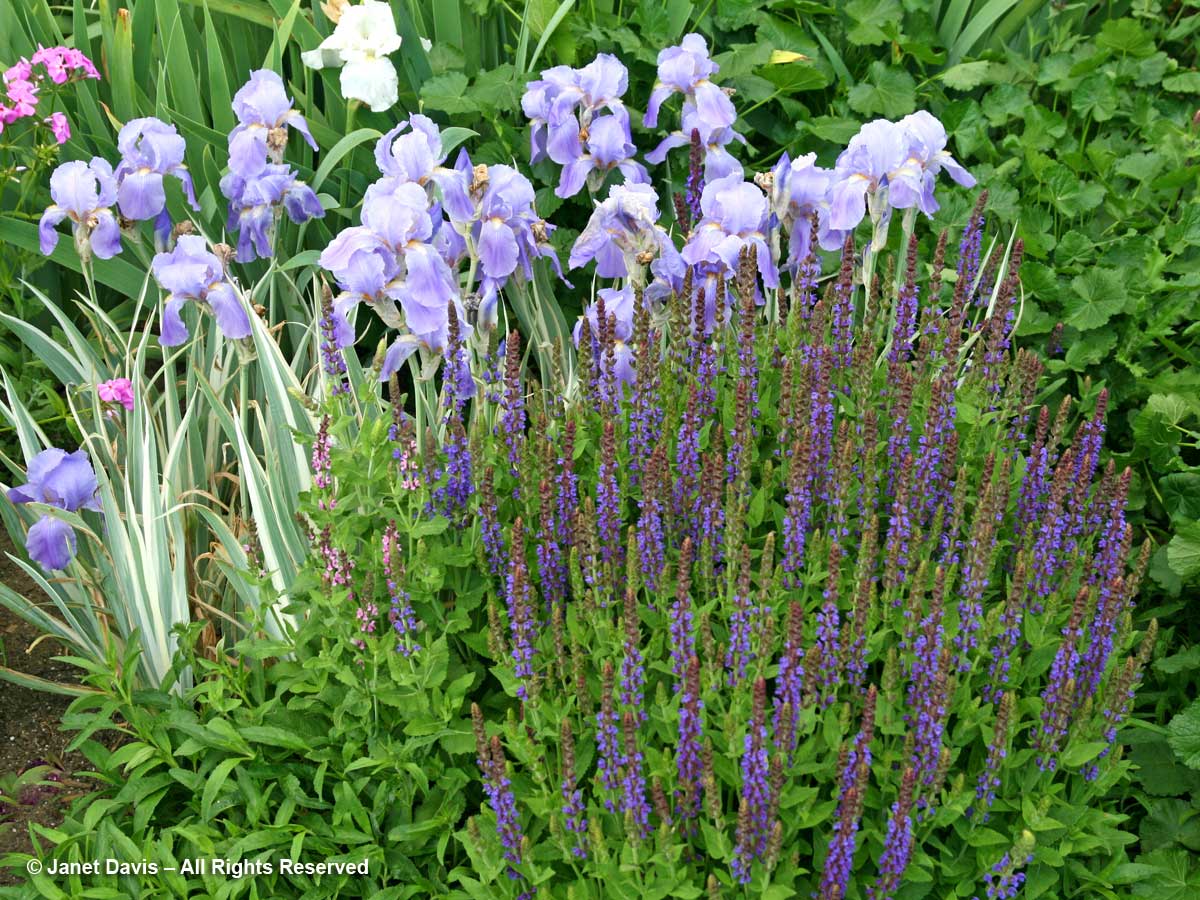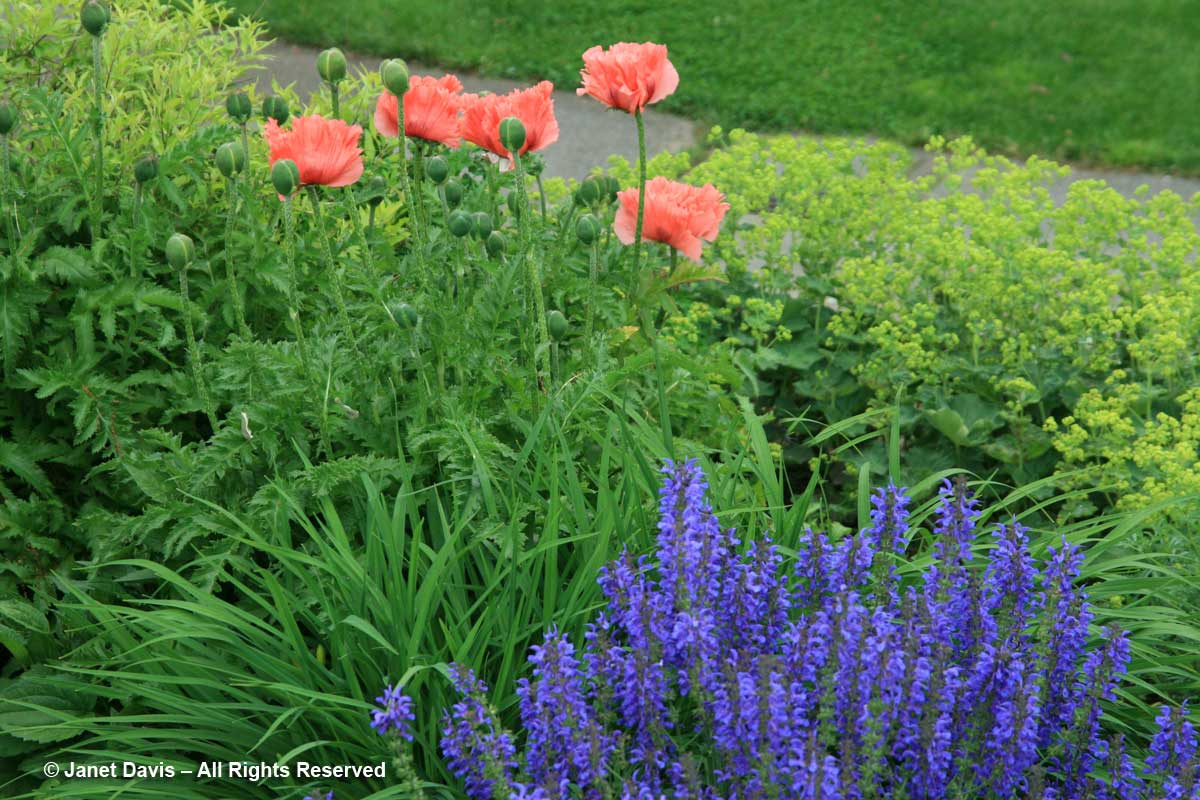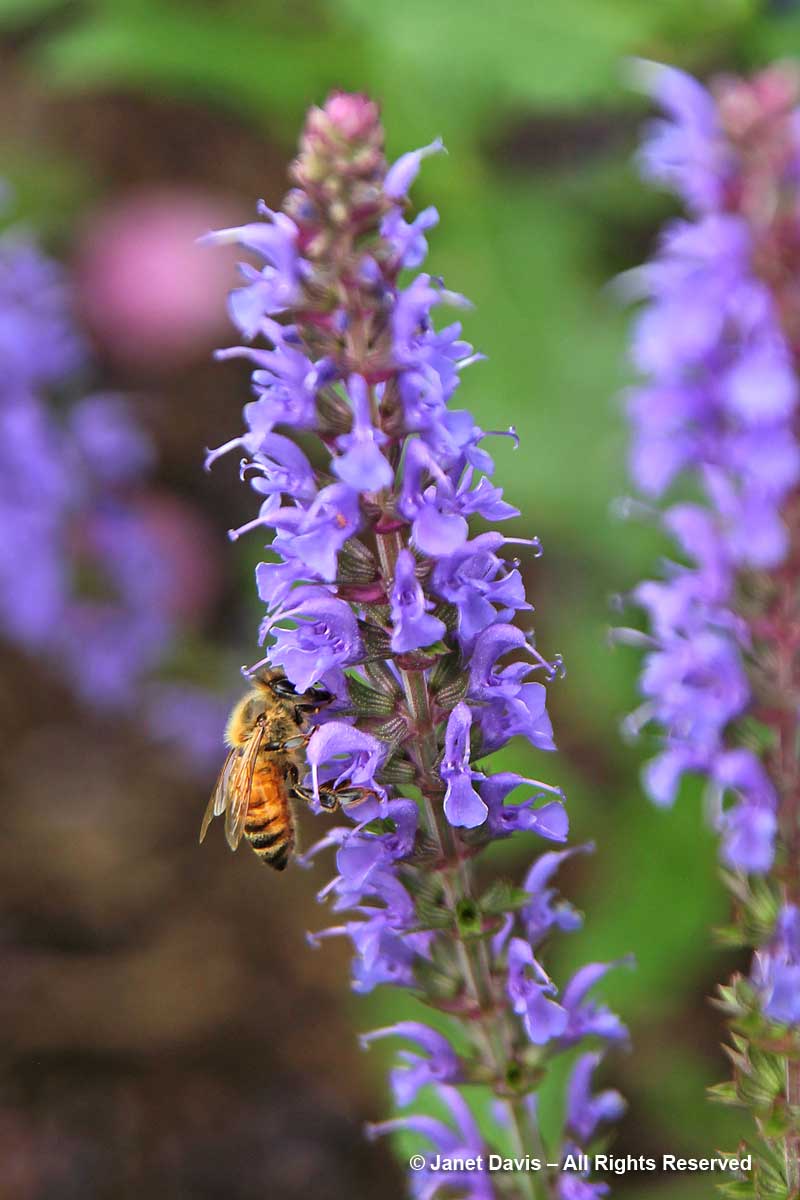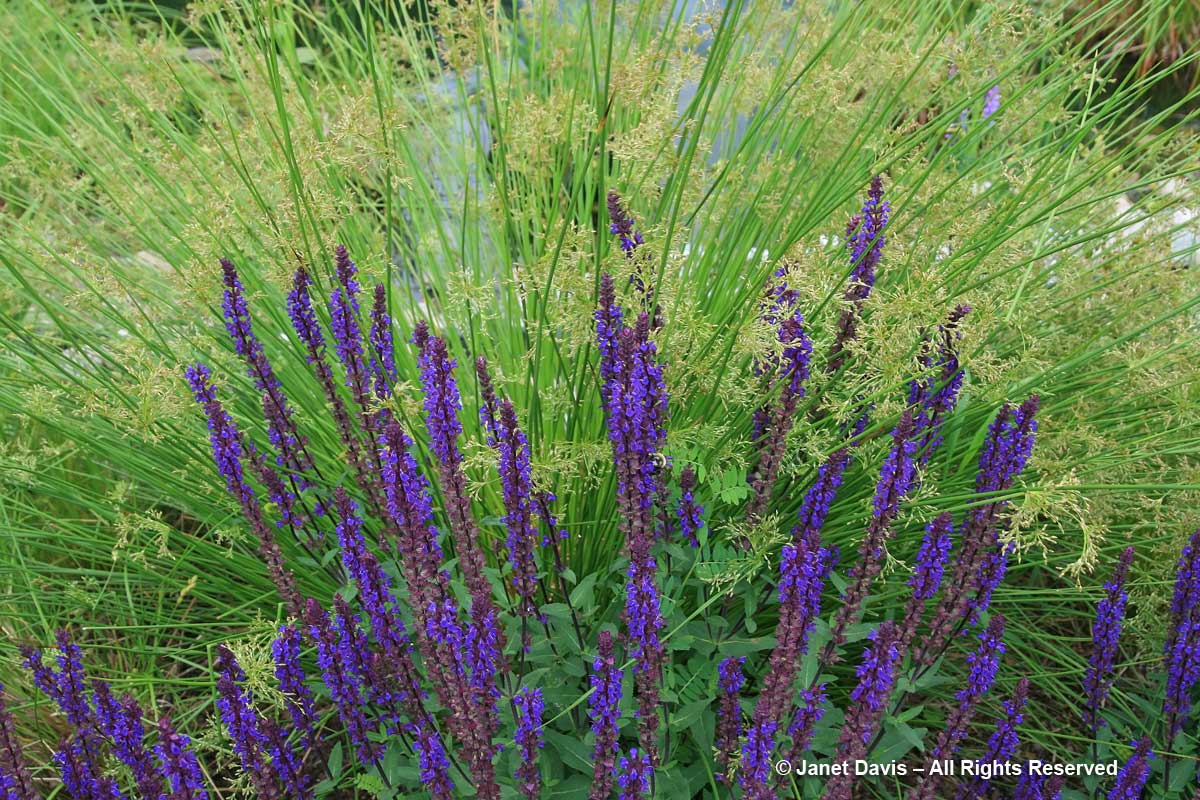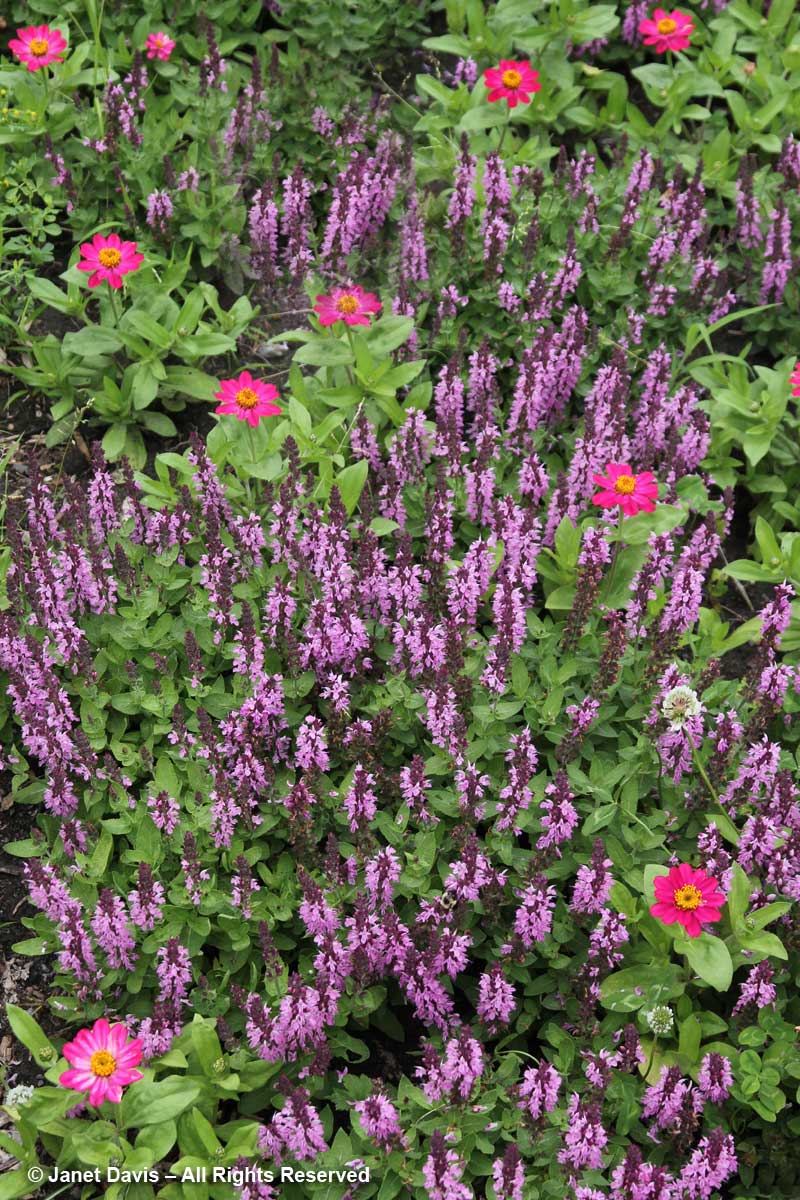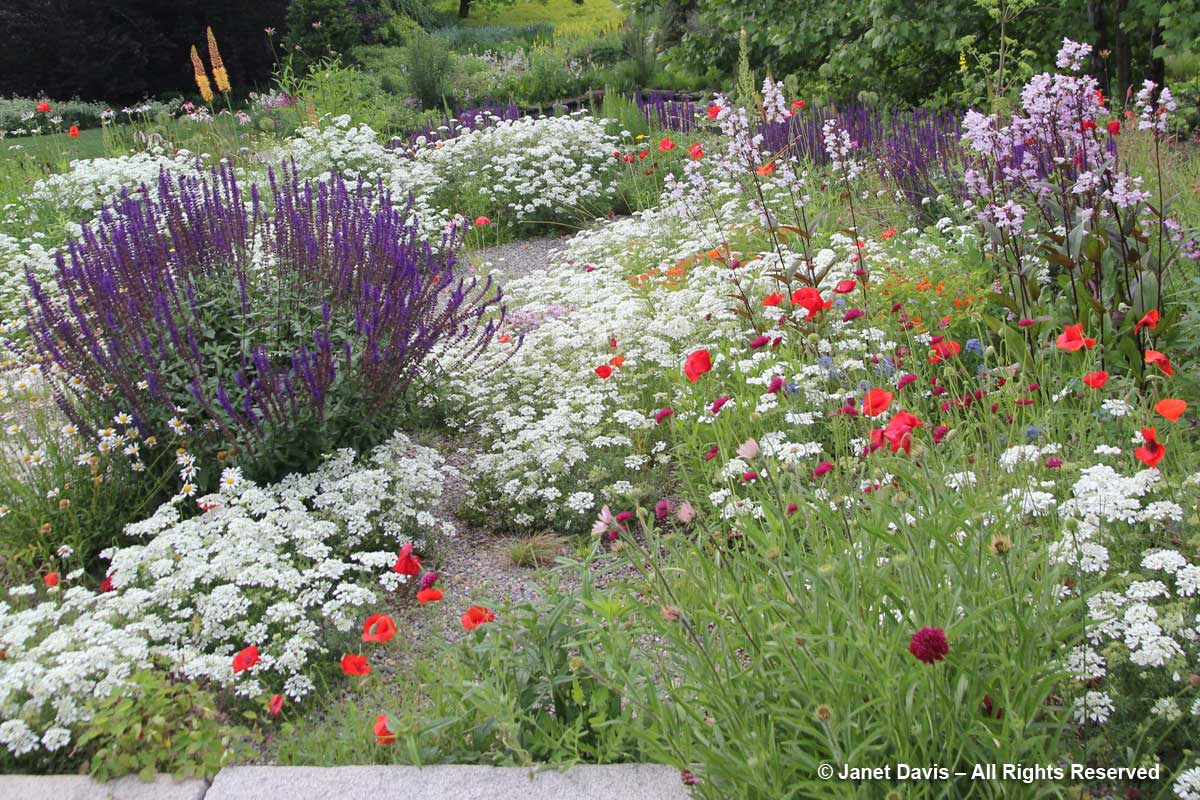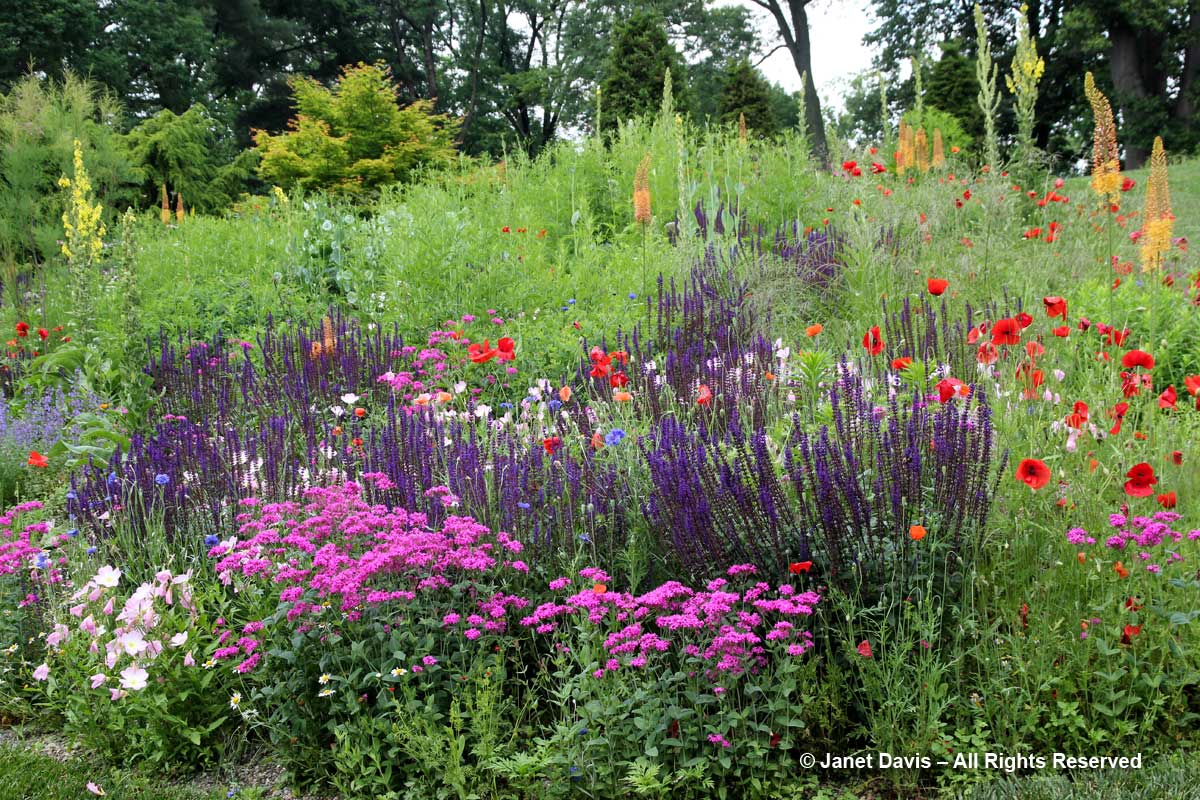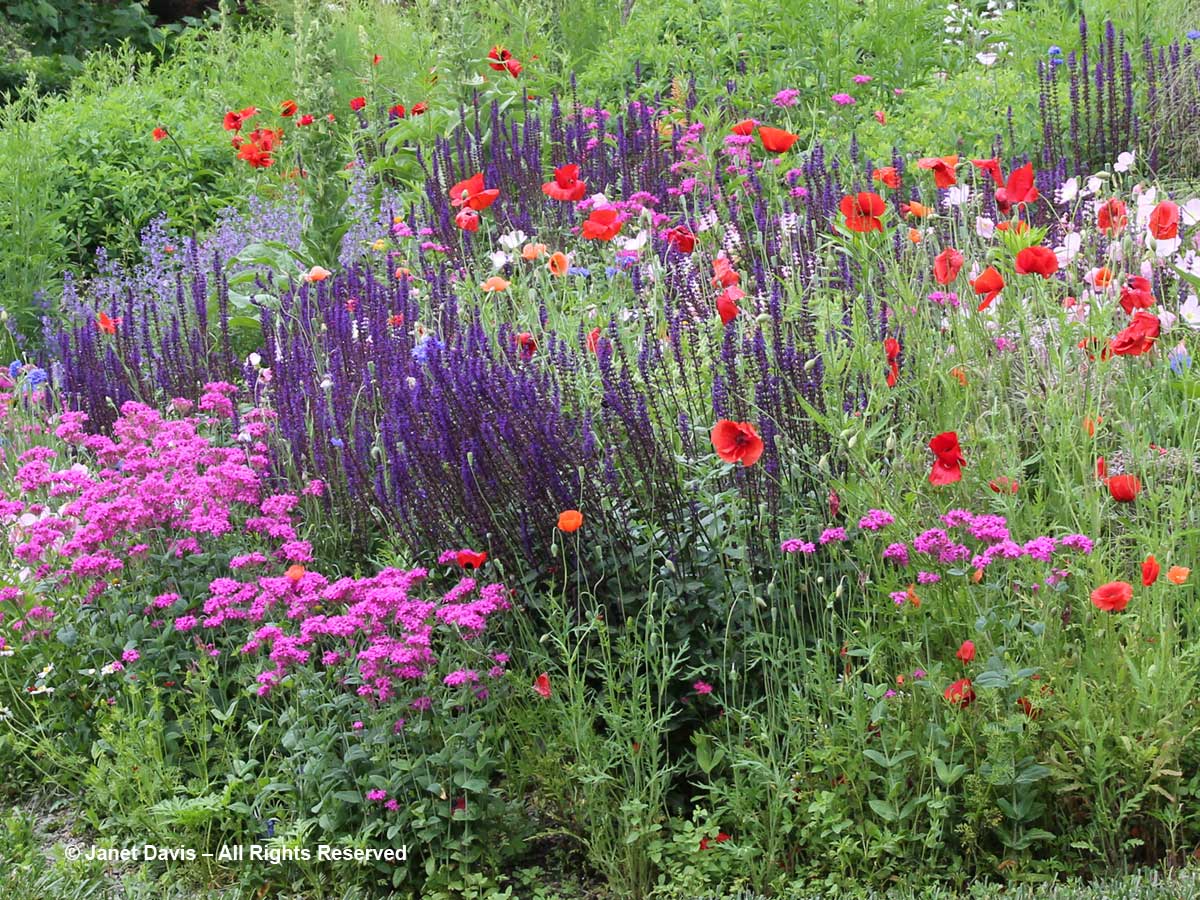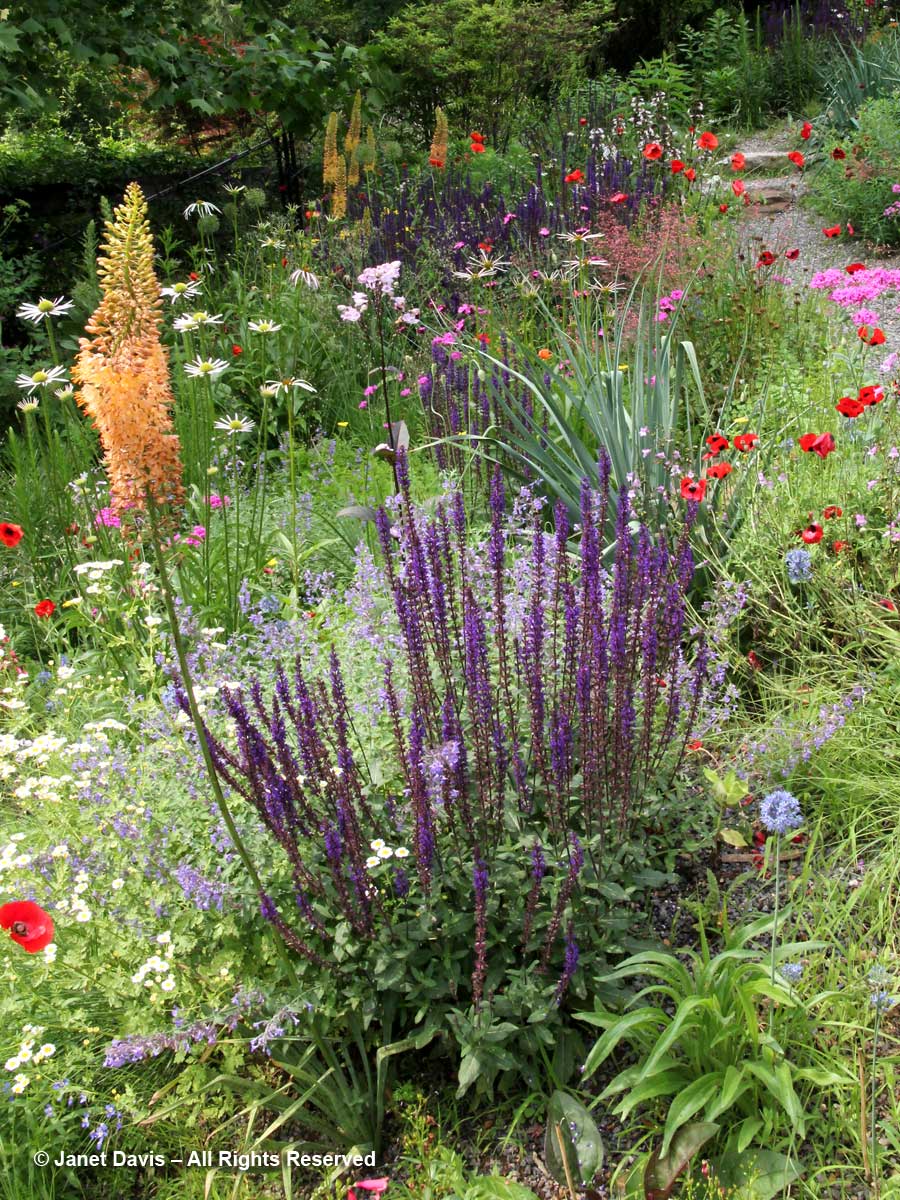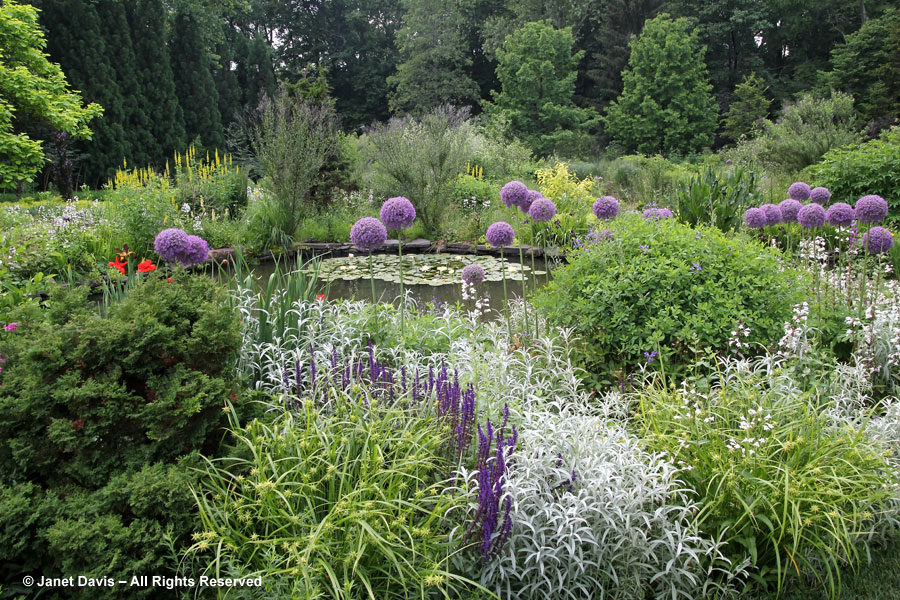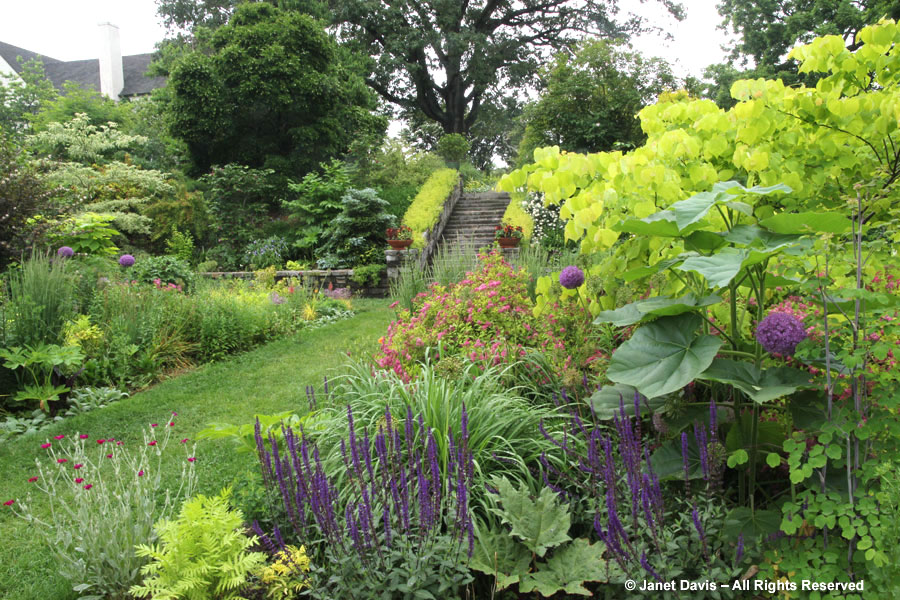My crown for May 31st wafted its fragrance around my head and made me wish I could bottle its sweet perfume. That would be the scent of the Meyer lilac (Syringa pubescens ‘Palibin’) that I planted in my fragrance garden long ago. The white flowers are from my big alternate-leaved dogwood (Cornus alternifolia), an Ontario native shrub. And the fluffy spheres are an ornamental onion, Allium hollandicum ‘Purple Sensation’.
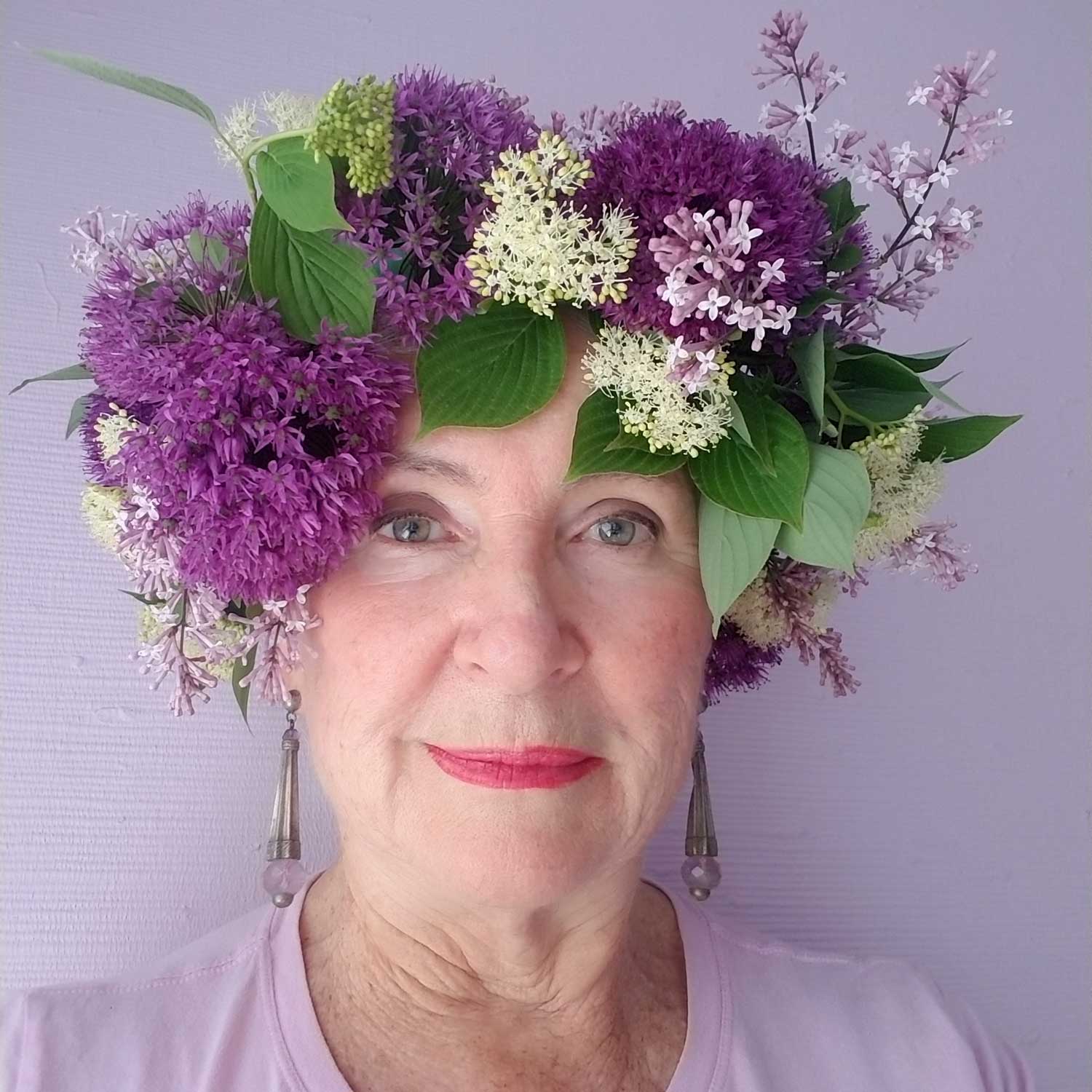
Much of the joy of lilac time is that it only lasts a week or so – if you just grown one type – so I’ve learned to savour that scent on the air or in a vase on my kitchen table, along with dame’s rocket (Hesperis matronalis).
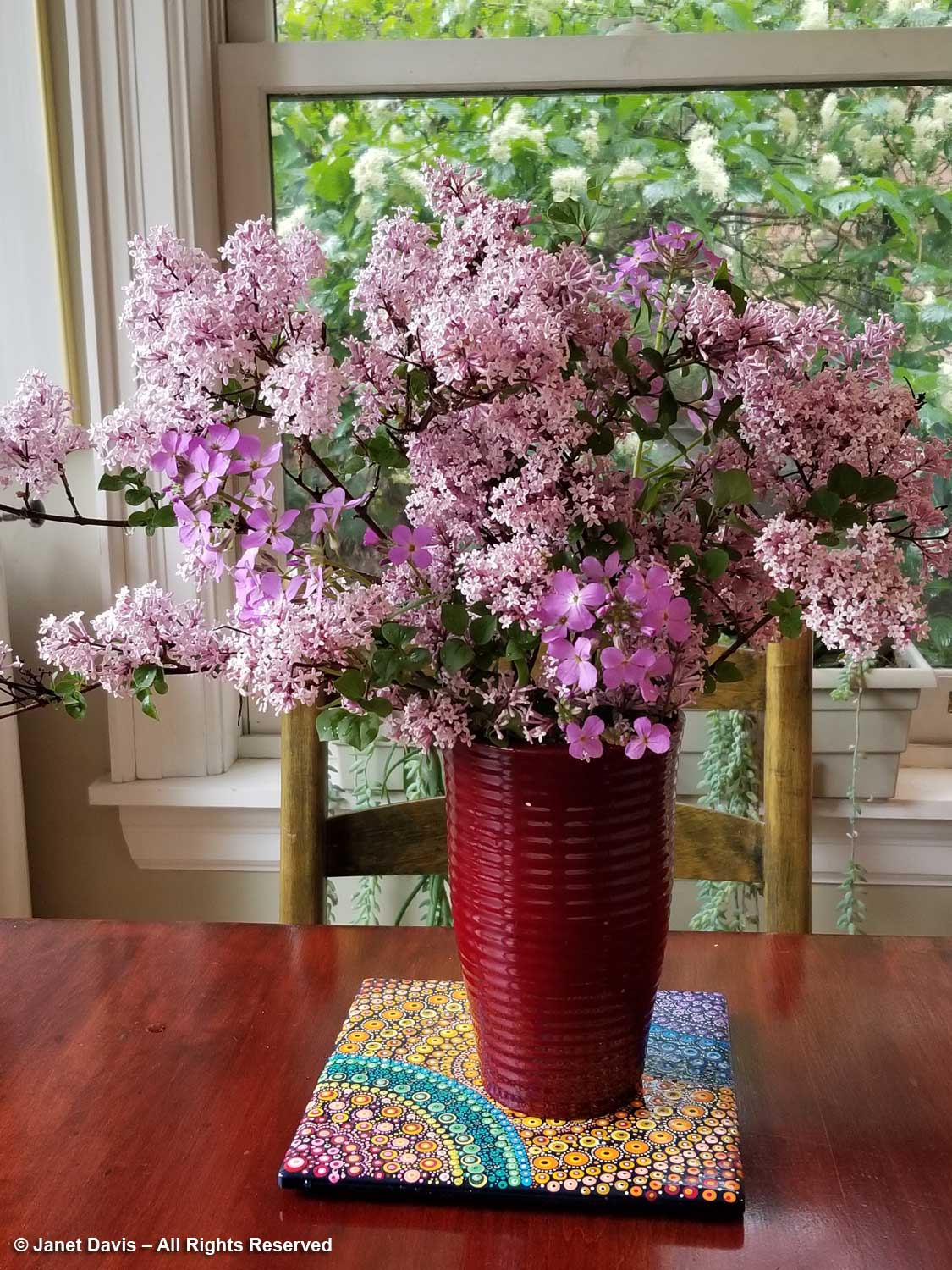
Unlike the towering common lilac (Syringa vulgaris) which, if left unpruned, grows so tall that it flowers out of nose range, my Palibin dwarf lilac is just the right height to sniff at 5-6 feet (1.5-1.8 m) and a little wider. Some people grow it as a tightly-clipped hedge, but I prefer to let it have its natural shape.
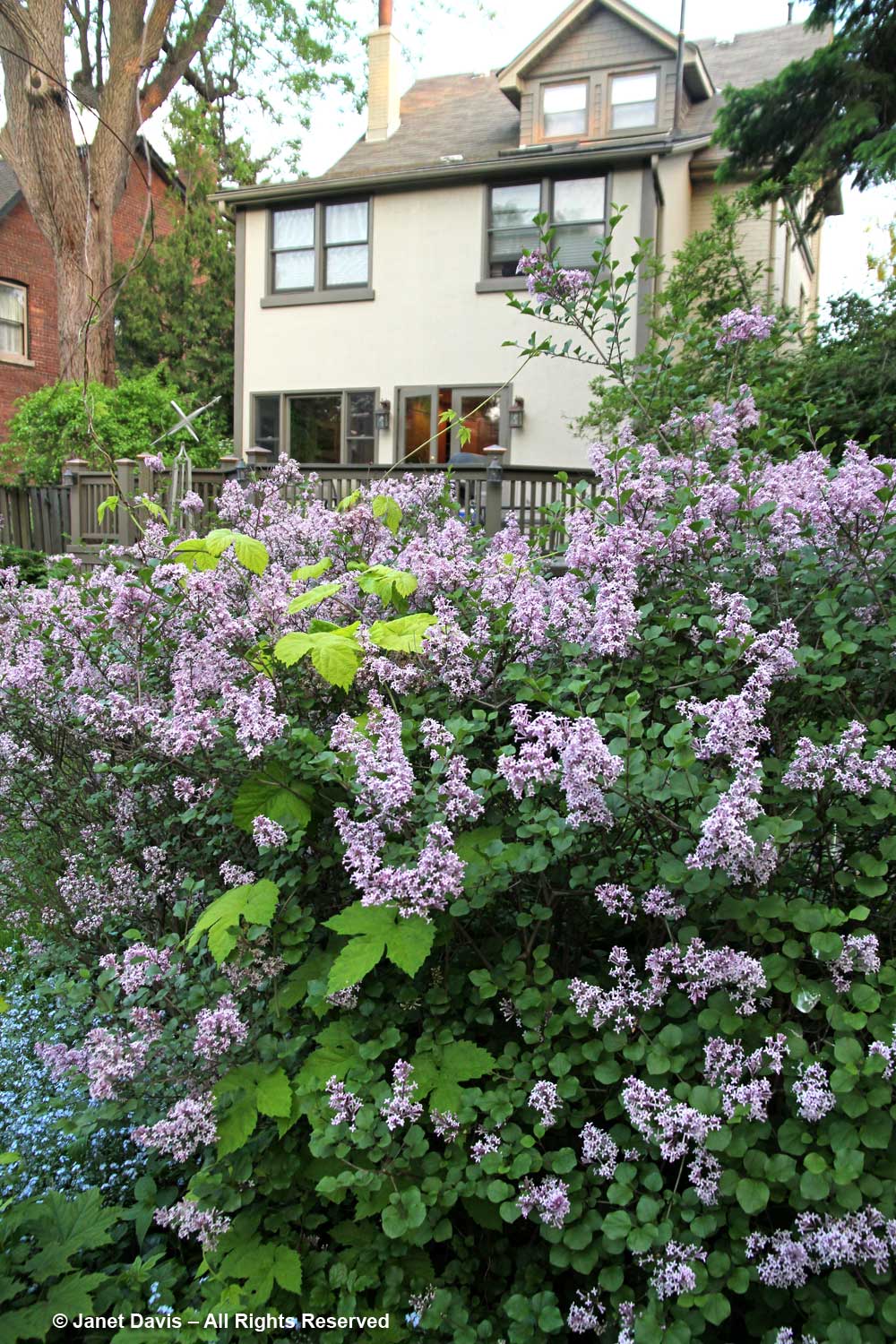
True, it has a light scent, not the old-fashioned perfume of the Hyacinthiflora hybrids or common lilac, but it is nonetheless an ultra-hardy and low-maintenance fixture in my fragrance garden, and swallowtail butterflies enjoy nectaring on the tiny florets.
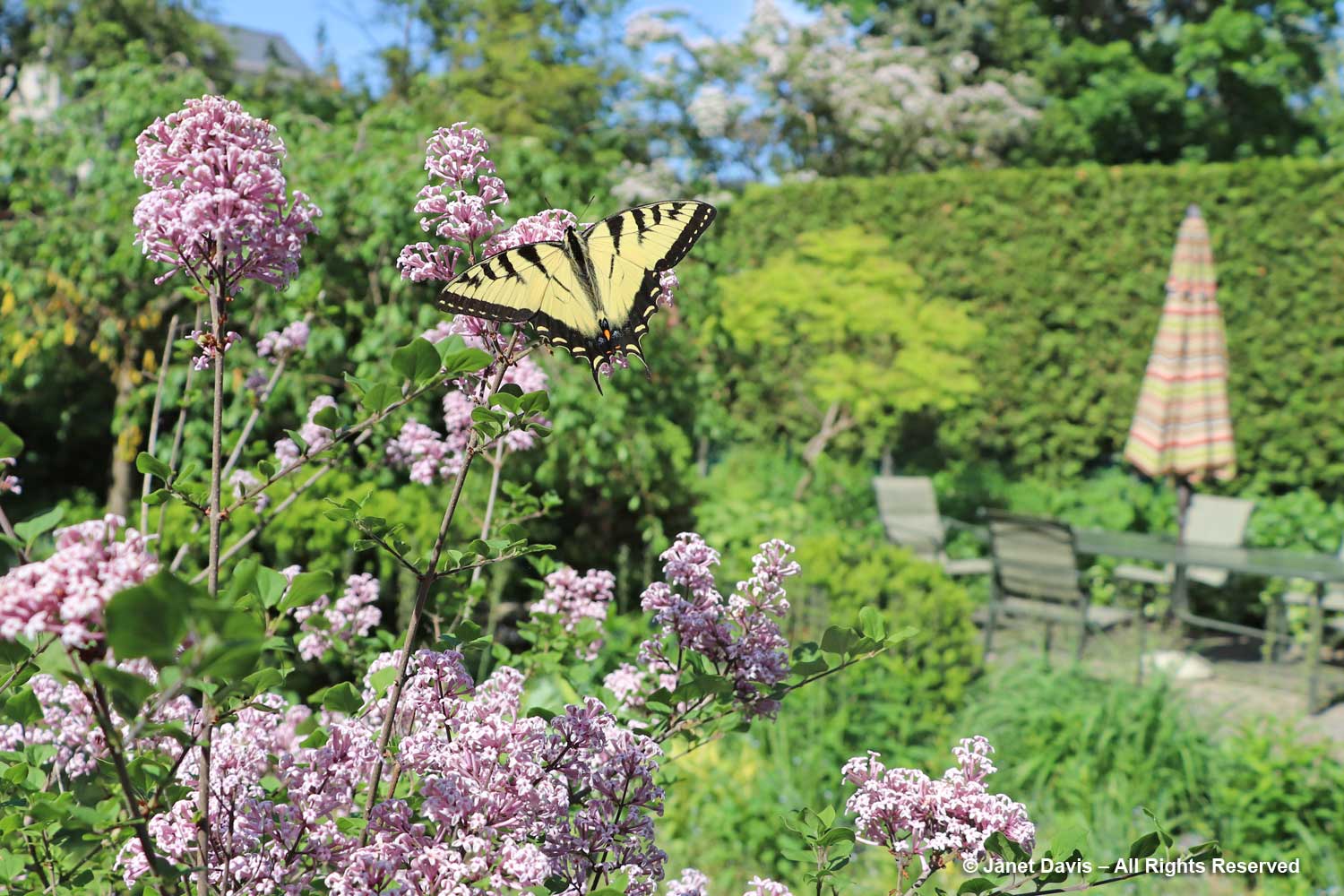
Its ancestor was found as a cultivated plant grafted on privet roots near Beijing, China in 1908 by Frank Meyer, who brought it to the U.S. It was named in his honour, Syringa meyeri, before being reclassified as Syringa pubescens subsp. pubescens ‘Palibin’. (Despite the fact that it was never found in Korea, it is often confused in the trade with the Korean lilac species, S. patula and its cultivar ‘Miss Kim’, as well as littleleaf lilac, S. microphylla.)
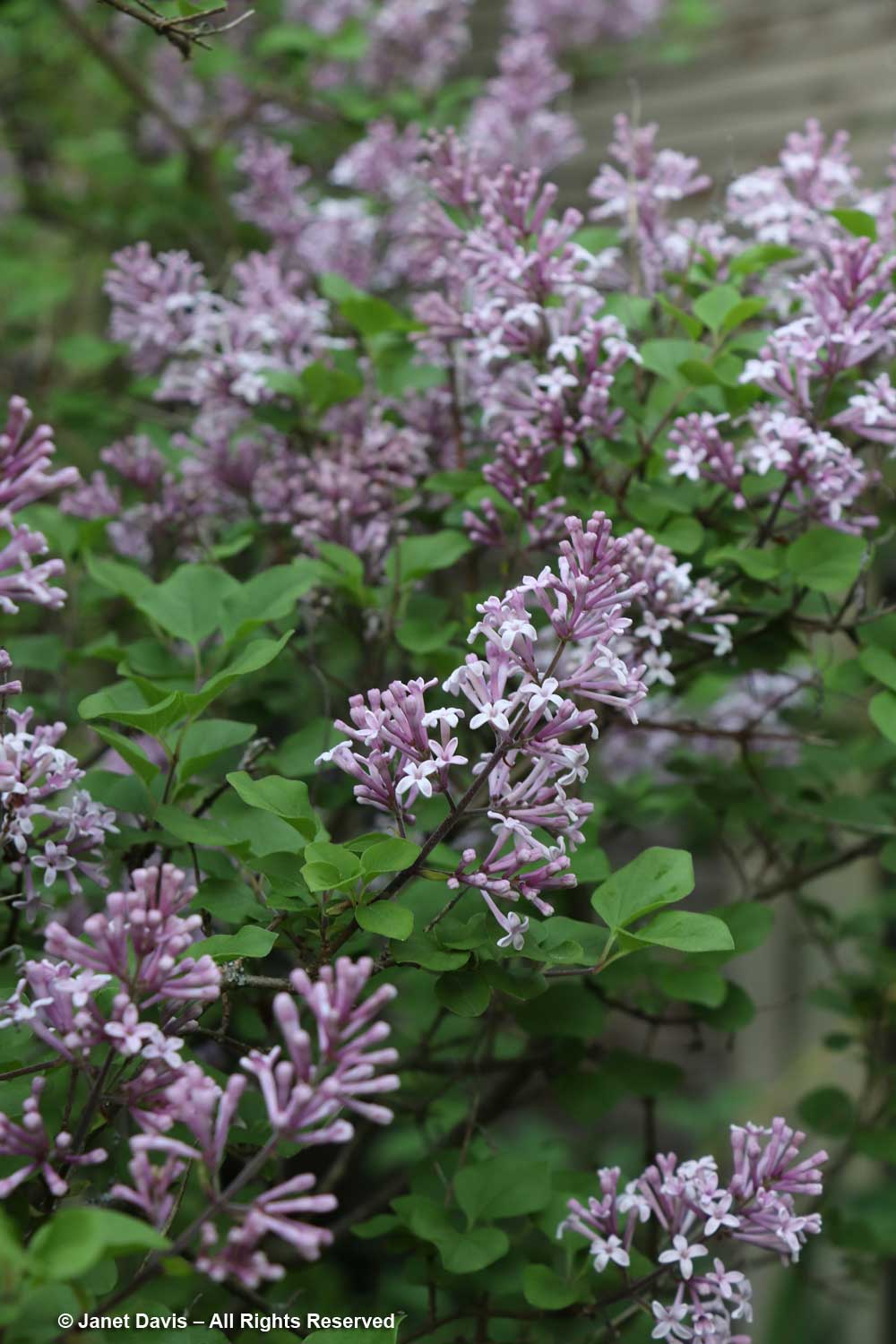
No such taxonomic confusion surrounds one of my favourite garden plants, the alternate-leafed dogwood (Cornus alternifolia). Native to a large swath of northeast North America, it is sometimes called pagoda dogwood for its layered branching. It occupies a corner of my garden that sits just a few inches lower than the rest of the back yard, and appreciates the extra moisture there. It is approximately 18 feet (5.5 m) tall and almost as wide.
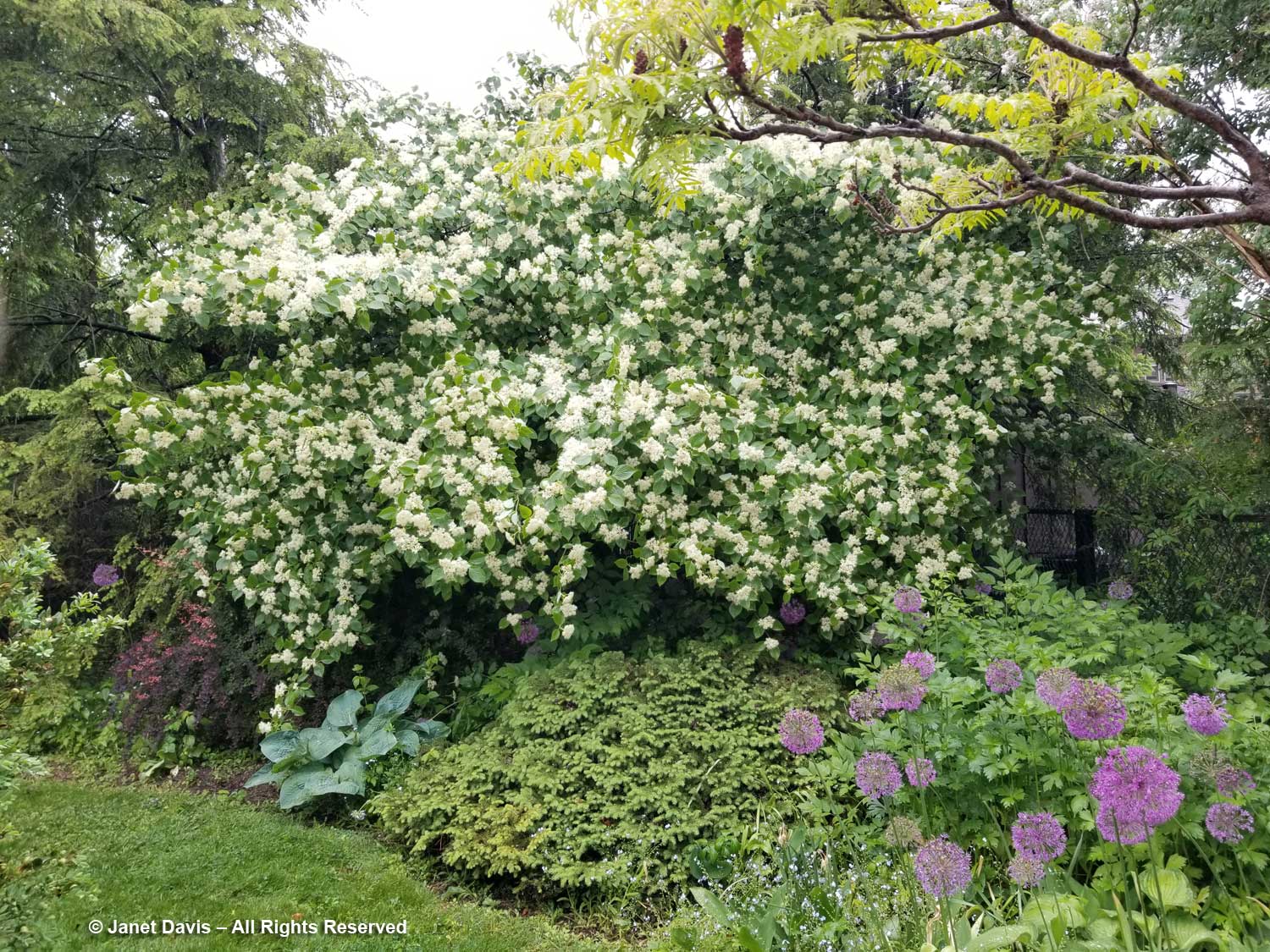
It derives its Latin and common names from the fact that, unlike other dogwoods, the leaves are arranged alternately, rather than opposite. Some people refer to it as “pagoda dogwood” for its layered branching.
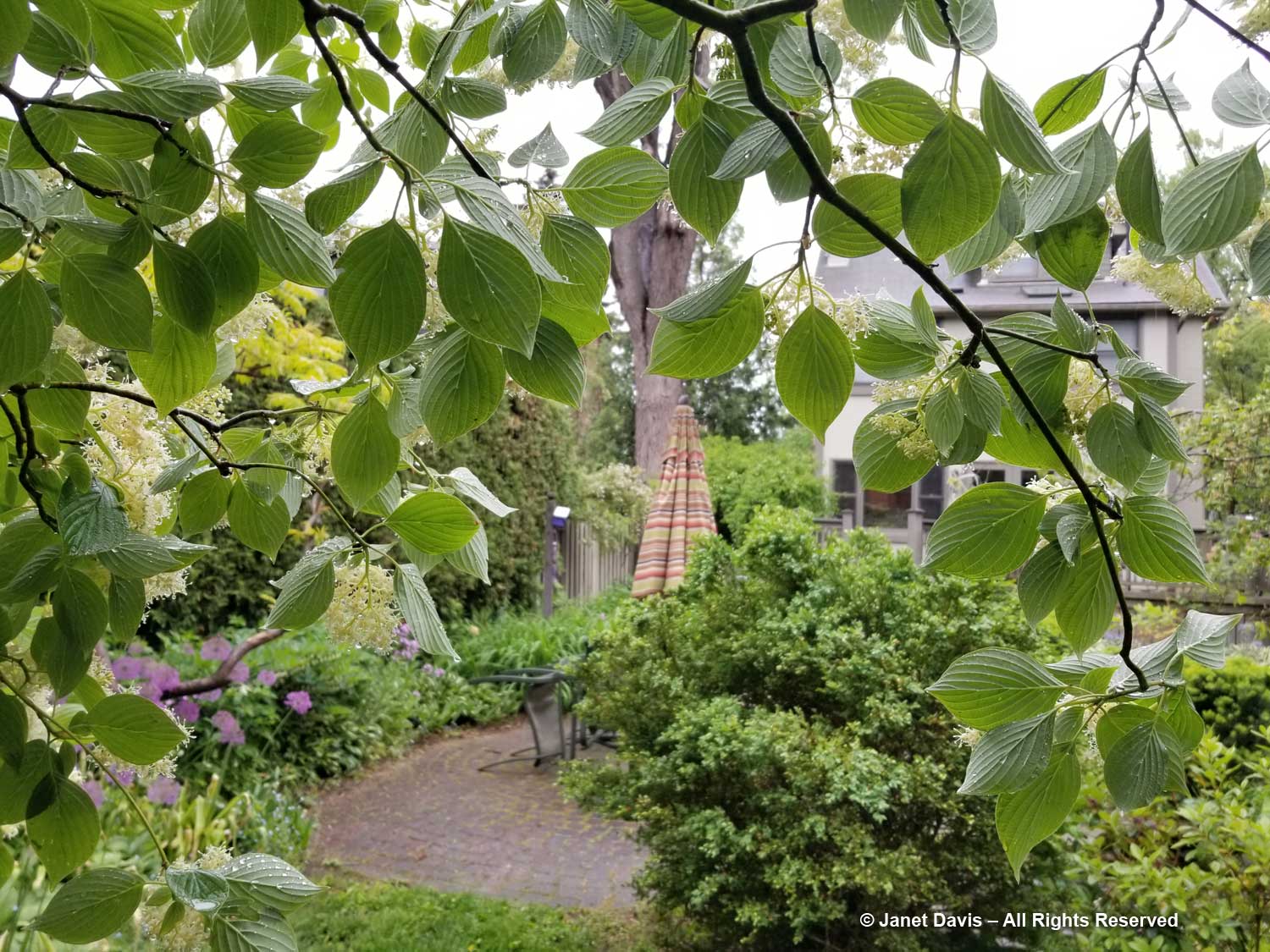
When it blooms in late May or early June, it is completely covered with creamy-white clusters of tiny flowers that attract native bees. I now have a few offspring of my original shrub seeded throughout my garden, which fills me with joy. And this morning I noticed the familiar flowers reaching over the fence from my next-door neighbours’ yard. I’m not sure they’ll know it was a gift from me, but it seems that my dogwood is intent on taking back native habitat from boring back yards! Hurrah!
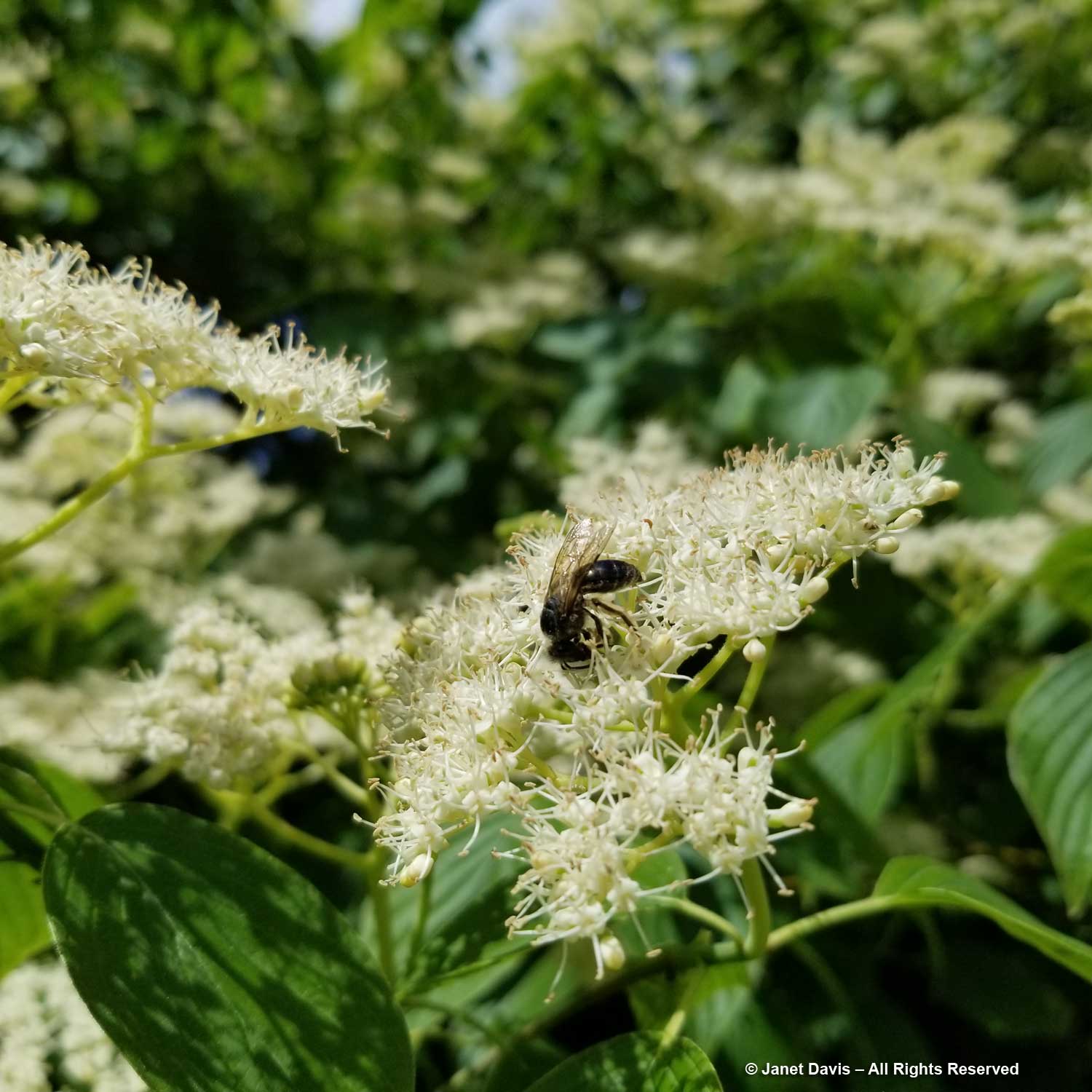
In late summer, birds and squirrels make quick work of the blue fruit clusters….
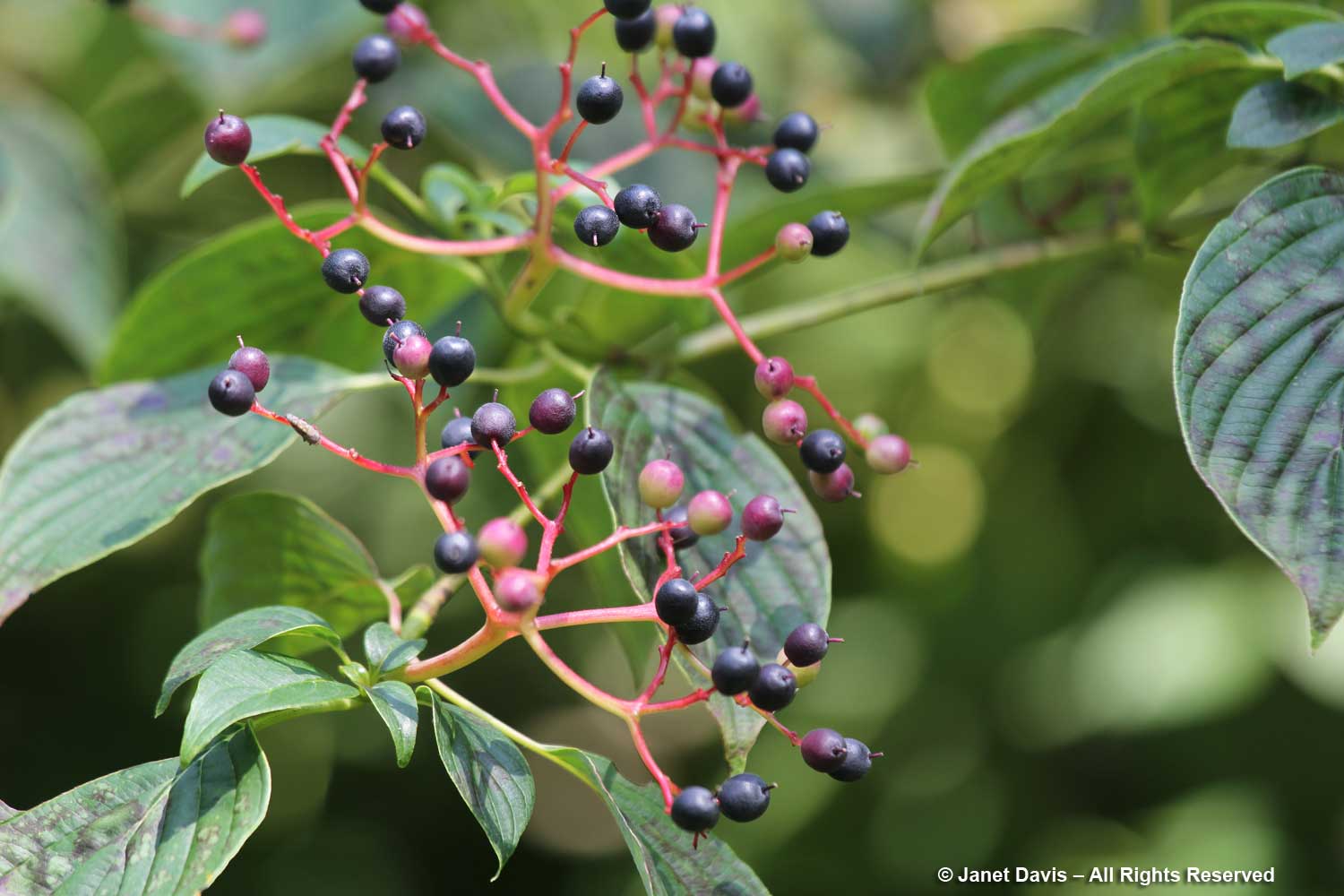
….. and in October, the foliage turns a lovely rose suffused with gold.
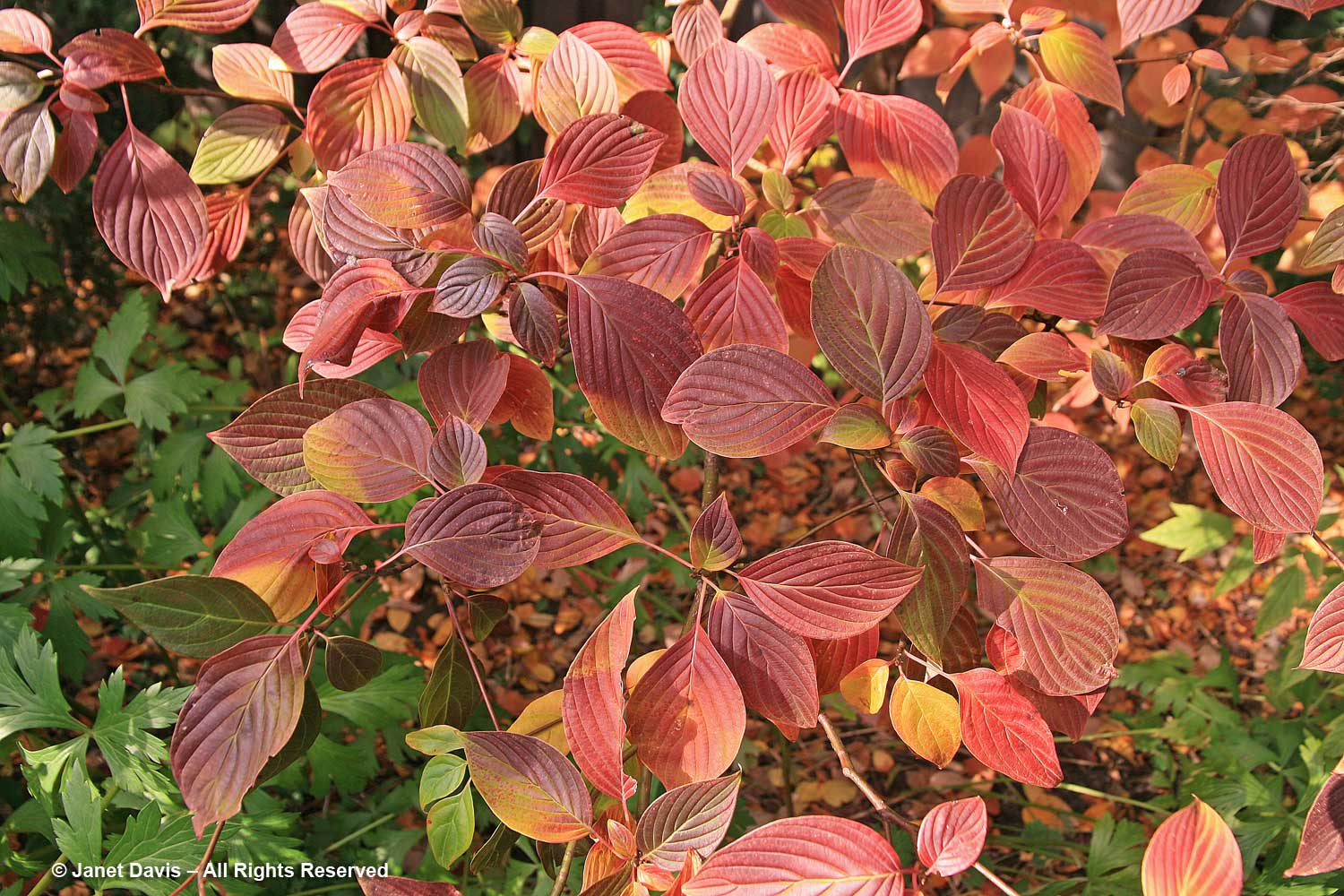
Then there are the alliums, or ornamental onions. When I first planted Allium hollandicum ‘Purple Sensation’ a few decades ago, I didn’t expect that it would be quite so exuberantly happy in my garden. Translated, that means it seeds itself around vigorously, especially in spots that dry out in summertime.
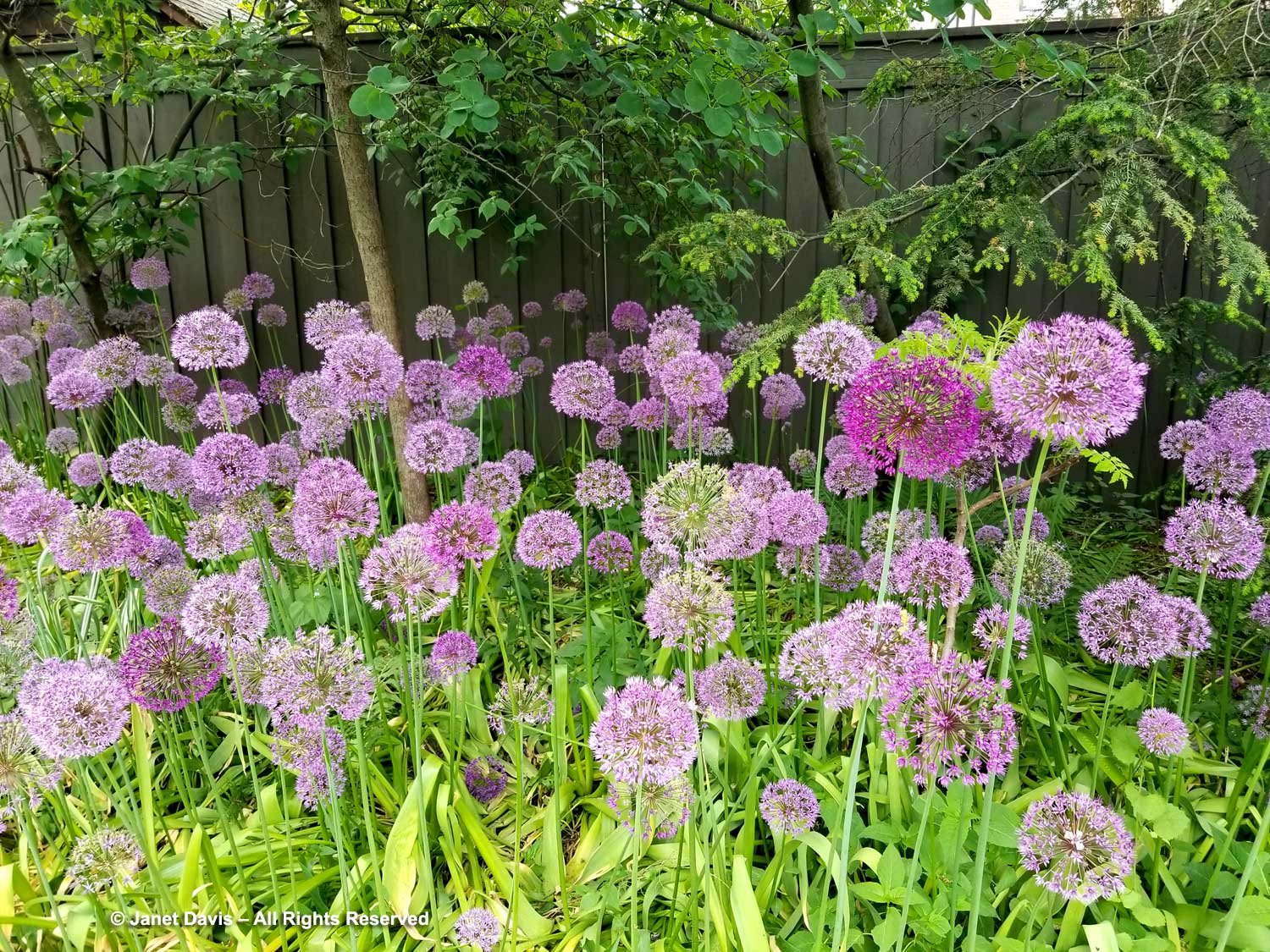
The good news: the bees love the violet-purple globes on 3-foot (90 cm) stems; the bad news: the plants look seriously ugly as the leaves turn yellow.
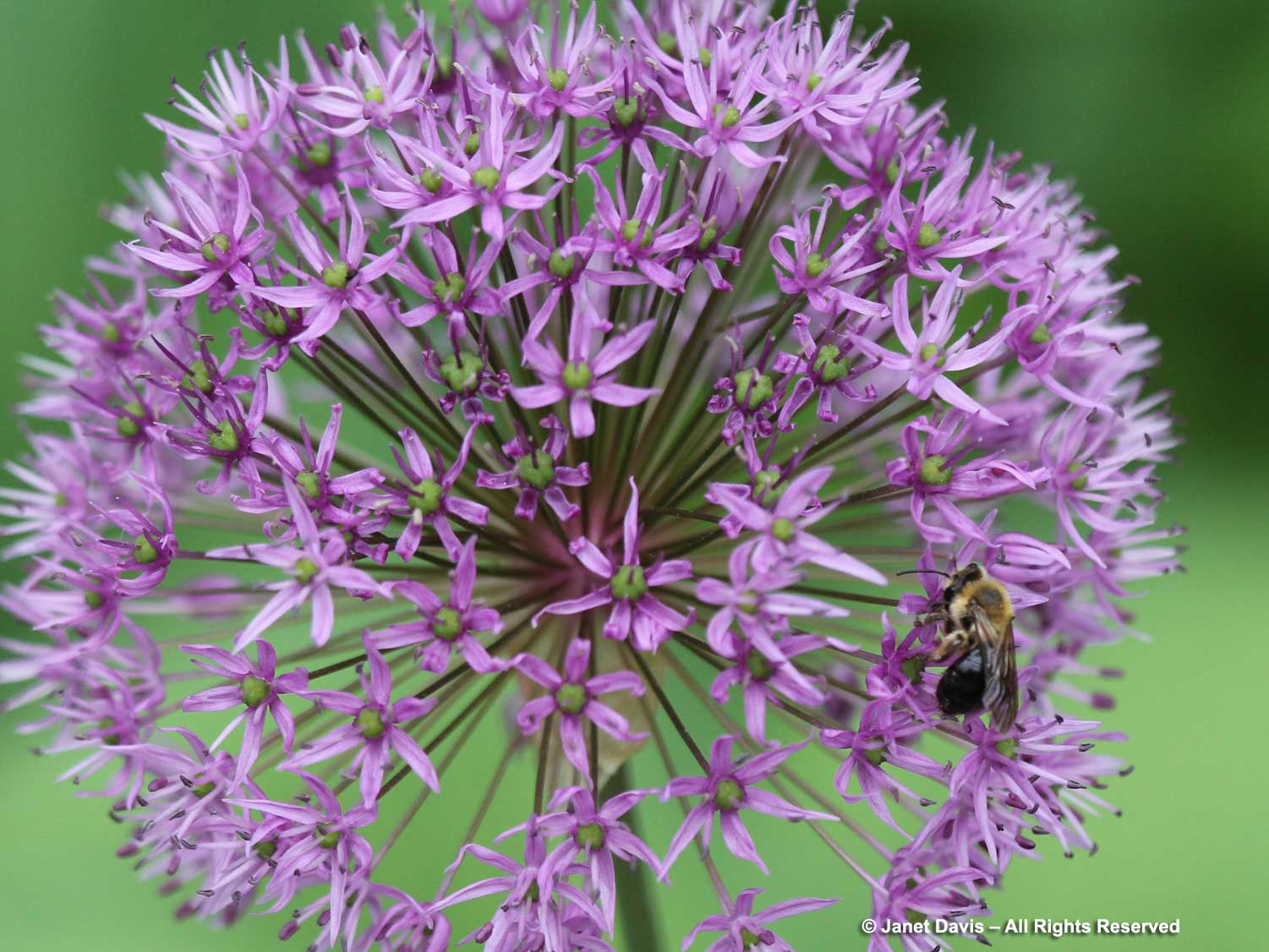
Rather than let them grow in a thicket, like I do in places, the best approach is to intersperse them among herbaceous plants, such as Solomon’s seal (Polygonatum biflorum), below, with old fashioned dame’s rocket (Hesperis matronalis). The latter is a biennial that took decades to creep under the fence from my next-door neighbor’s garden. It is native to Eurasia and considered an invasive in some parts of North America where early settlers brought it to grow in their gardens. Driving home from New Jersey last week, I saw it growing in drifts along the side of the highway in Pennsylvania and upstate New York.
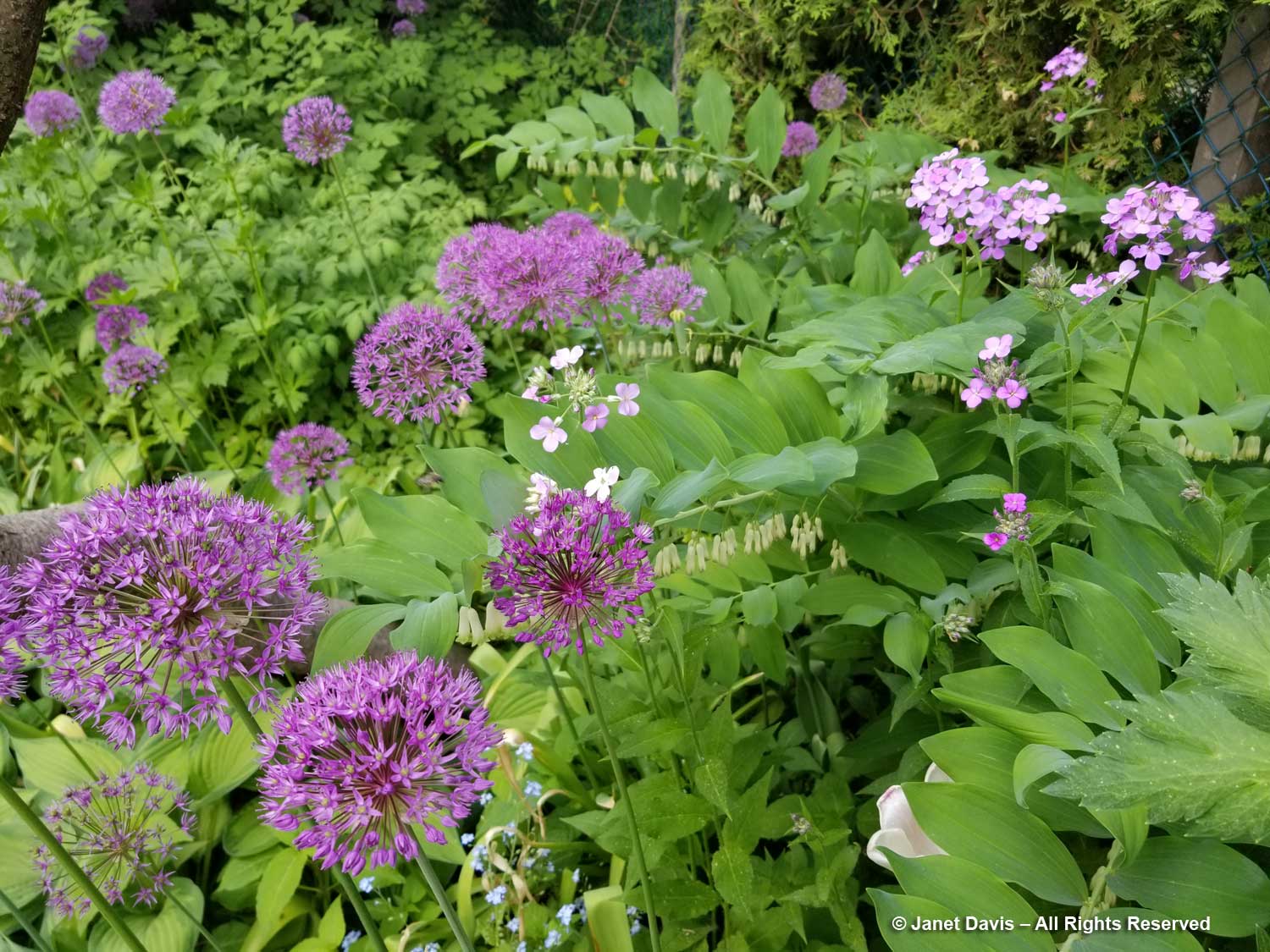
Perhaps no other weed has as many common names: dame’s rocket, damask-violet, dame’s-violet, dames-wort, dame’s gilliflower, night-scented gilliflower, queen’s gilliflower, rogue’s gilliflower, summer lilac, sweet rocket, mother-of-the-evening, Good & Plenties, and winter gillyflower (Wiki). As for its Latin name, Hesperis comes from the Greek word hespera, meaning evening, referring to the plant’s nocturnal fragrance.
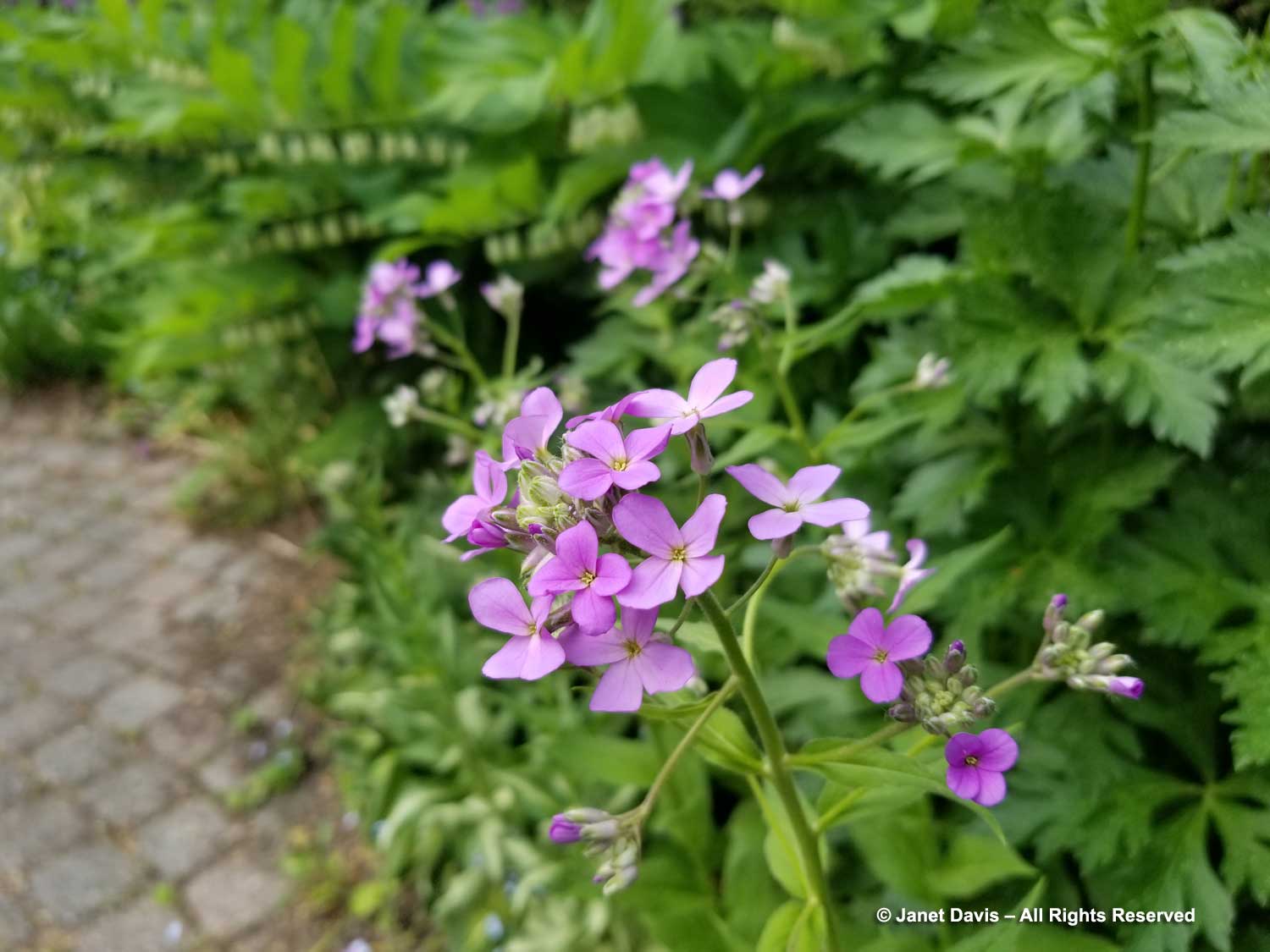
In my front garden, Allium ‘Purple Sensation’ pops up, along with the hybrid Allium ‘Globemaster’, amidst the emerging foliage of grasses and summer perennials. Dramatic purple exclamation points in a sea of green, they offer a charming interlude in this quiet, green period between the last spring bulbs and the sages and catmint of June.
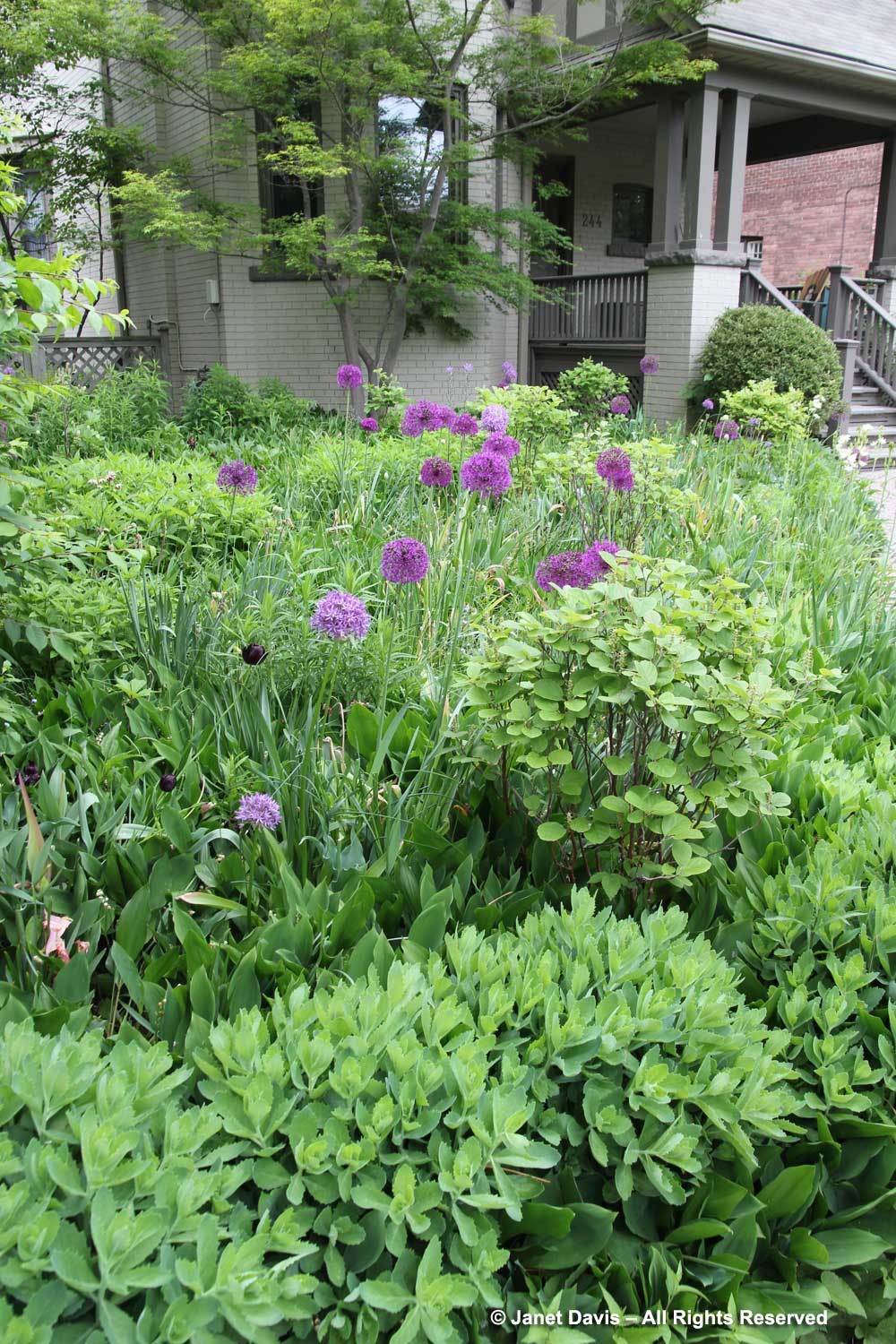
And then there’s an unassuming little native perennial that most of my neighbours would consider a weed. Virginia waterleaf (Hydrophyllum virginianum) grows in shady spots in my garden and, unlike the European weeds that like to colonize every square inch of freshly-dug soil, it picks its spots carefully. Its name comes from the white patterns that adorn the foliage of many, but not all, plants. When its tubular, white flowers bloom above the lobed leaves in late May, they are very popular with bumble bees and other native bees.
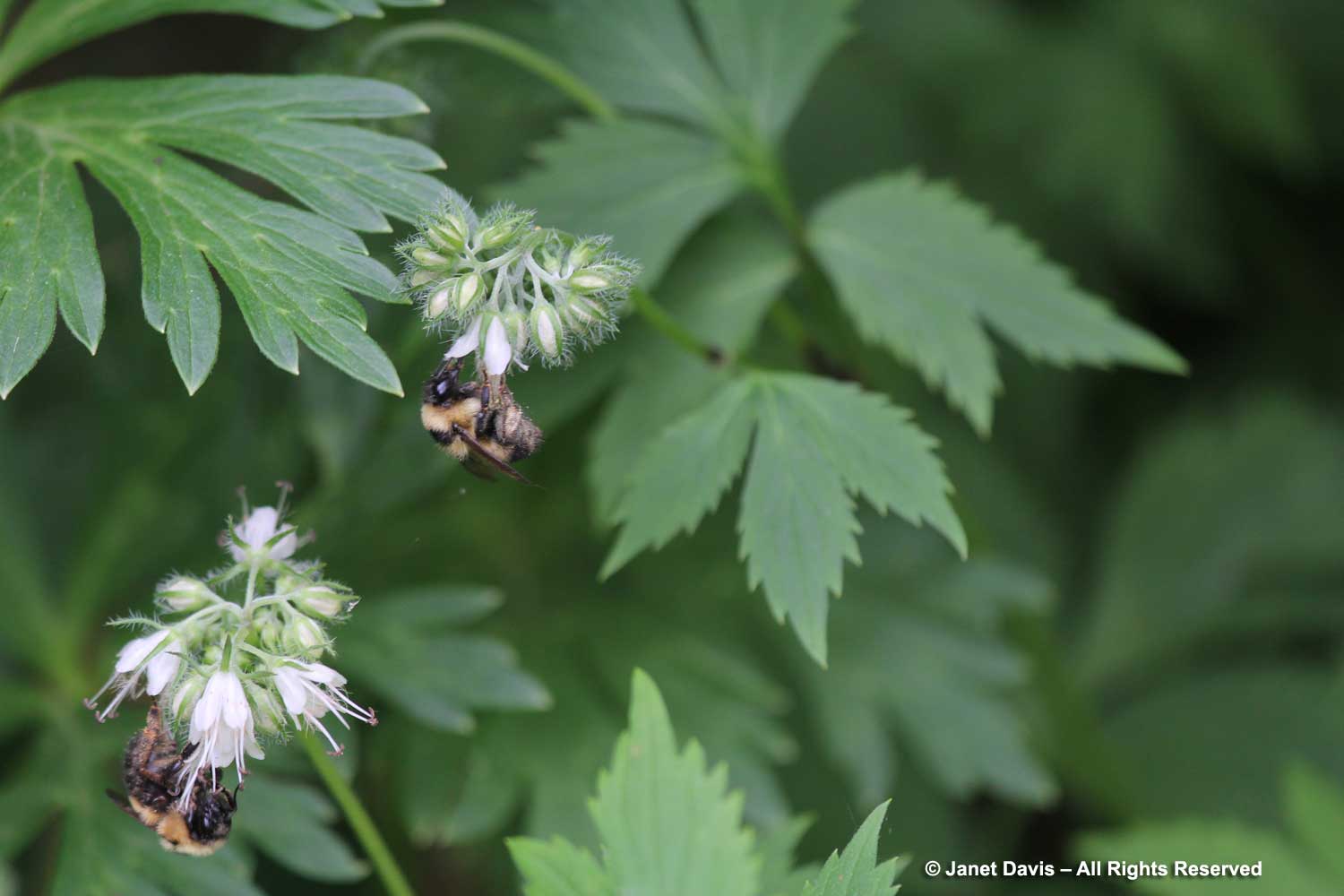
********
Want to see more of my Fairy Crowns?
#1 – Spring Awakening
#2 – Little Blossoms for Easter
#3 – The Perfume of Hyacinths
#4 – Spring Bulb Extravaganza
#5 – A Crabapple Requiem
#6 – Shady Lady
#7 – Columbines & Wild Strawberries on Lake Muskoka

